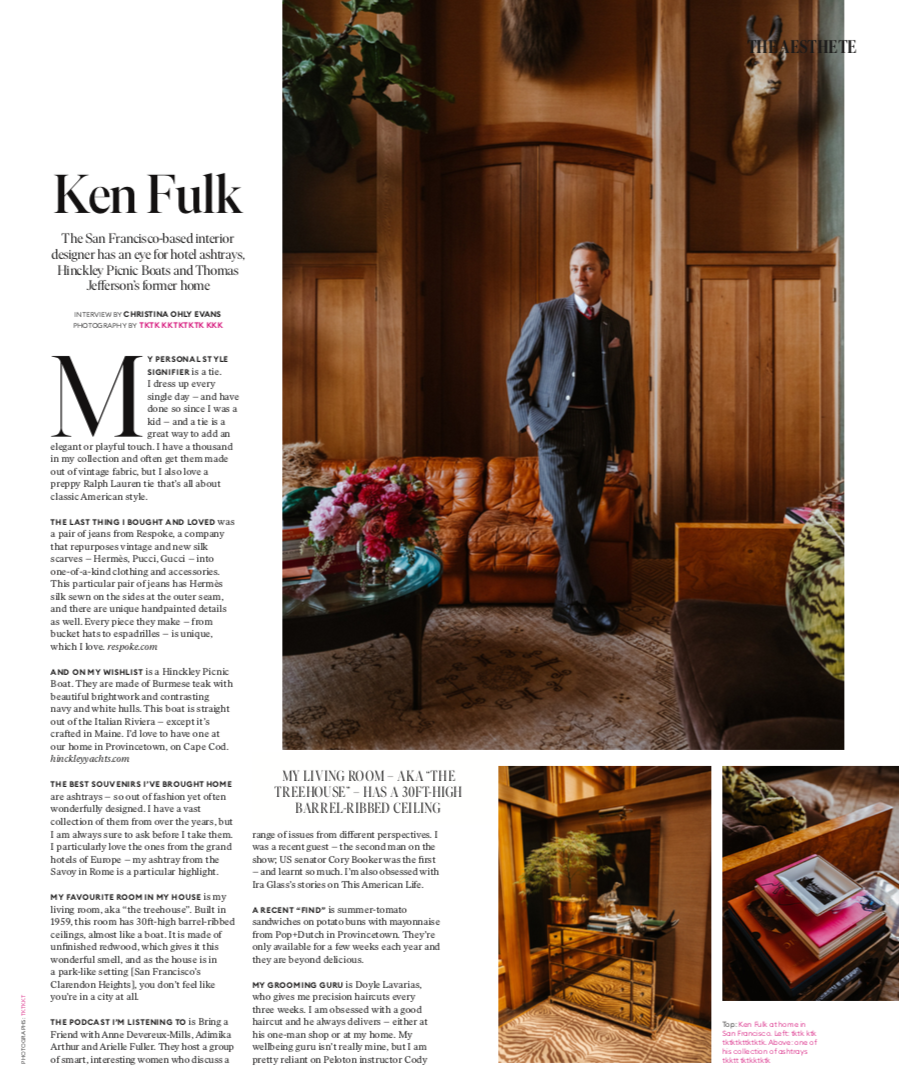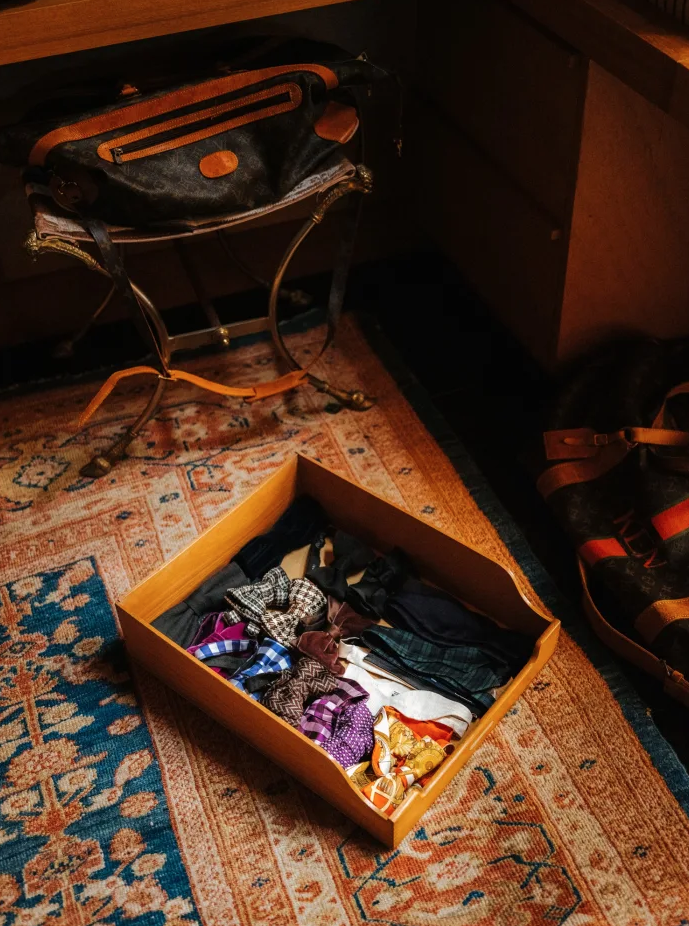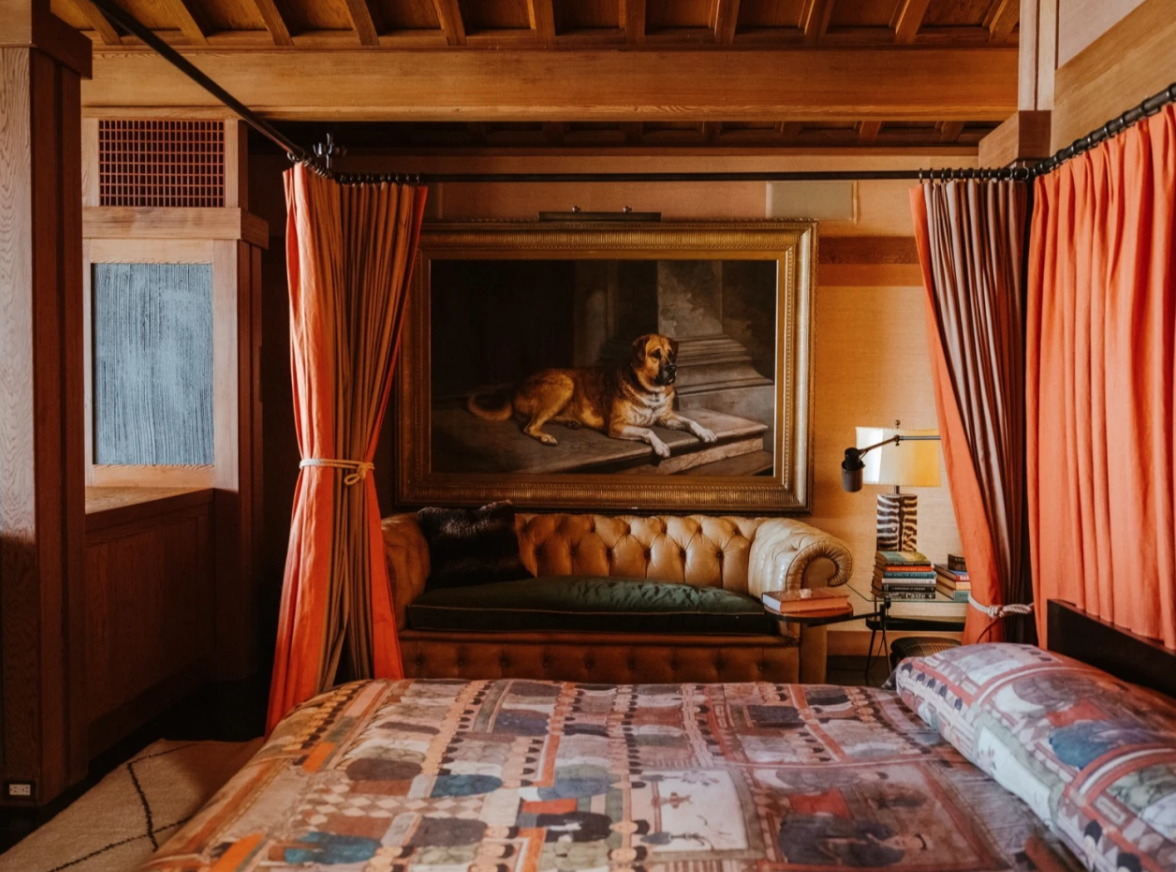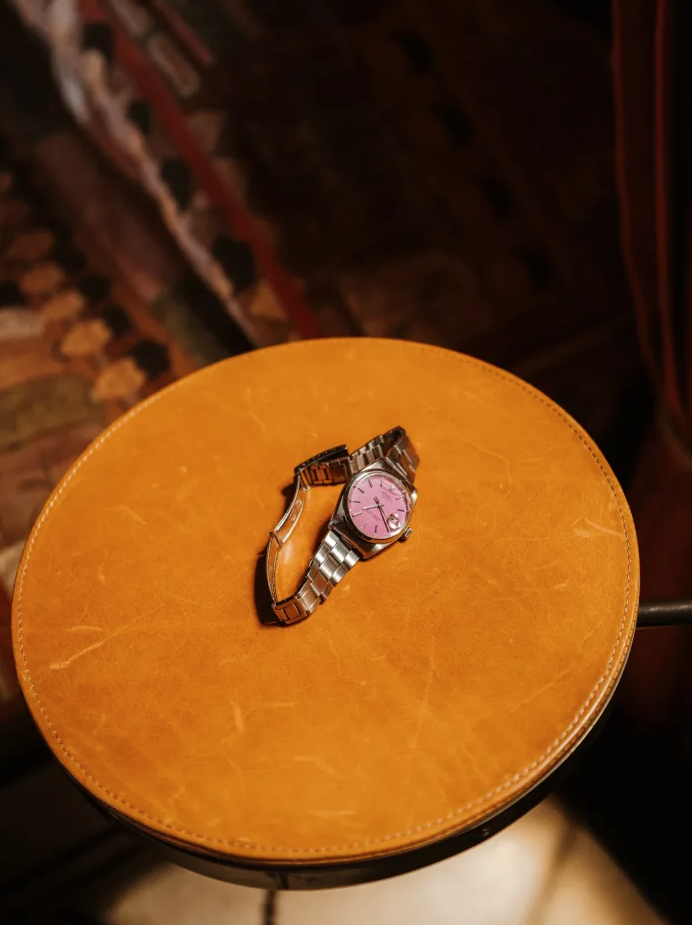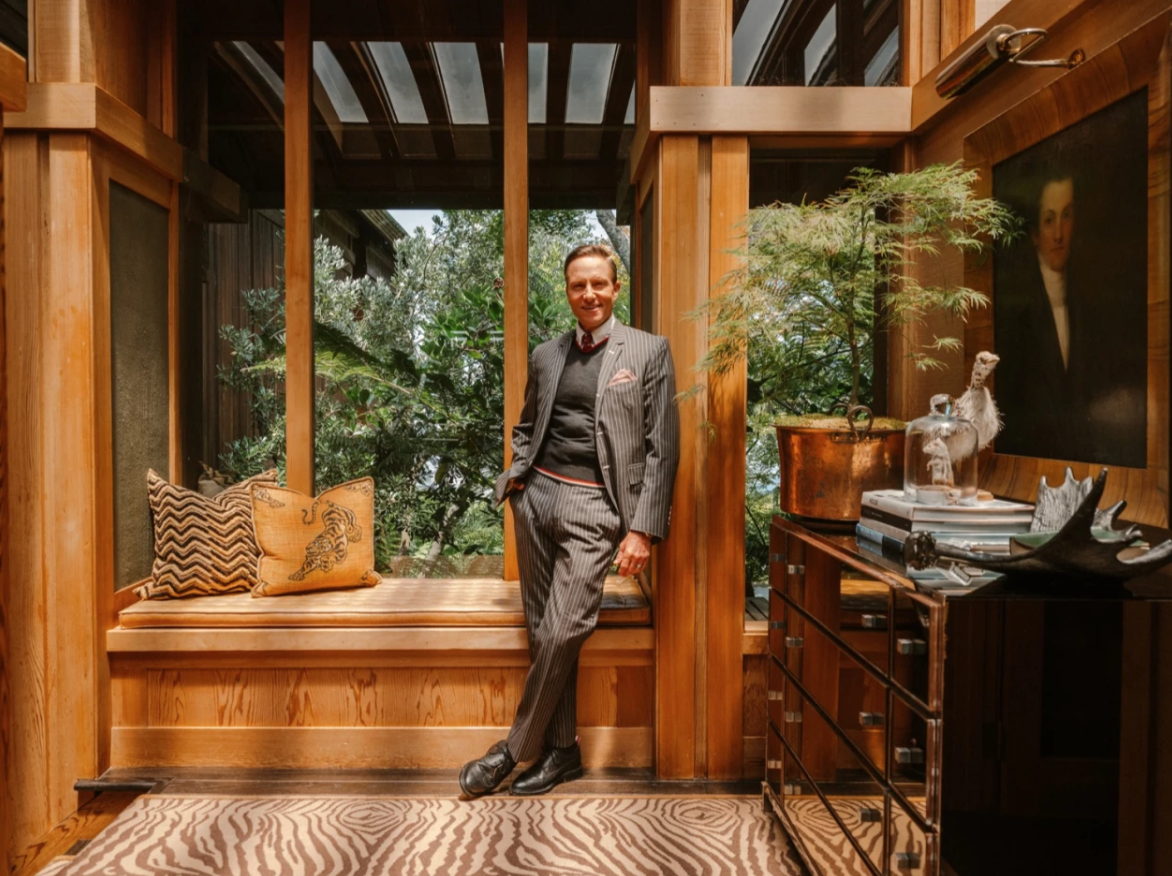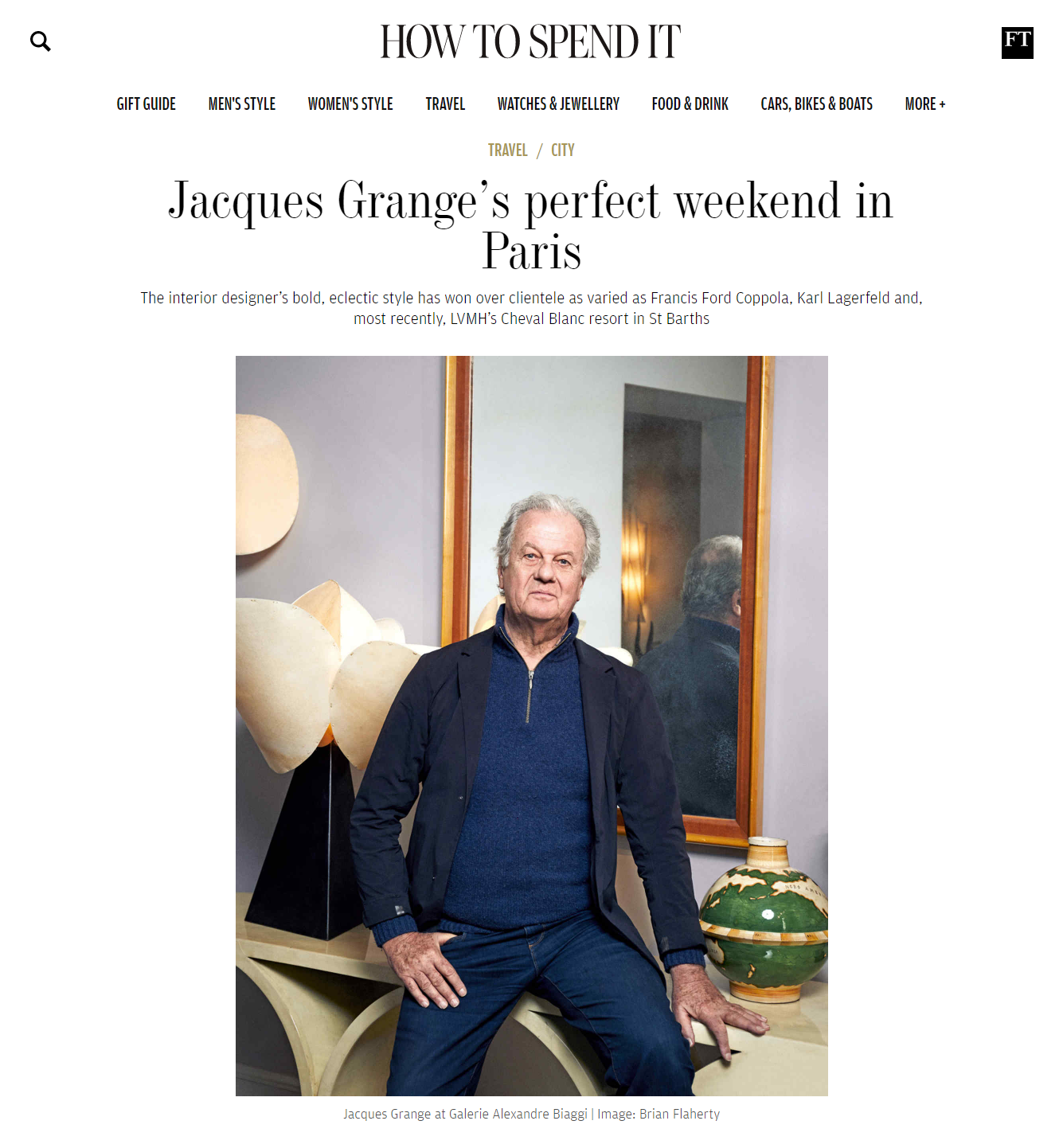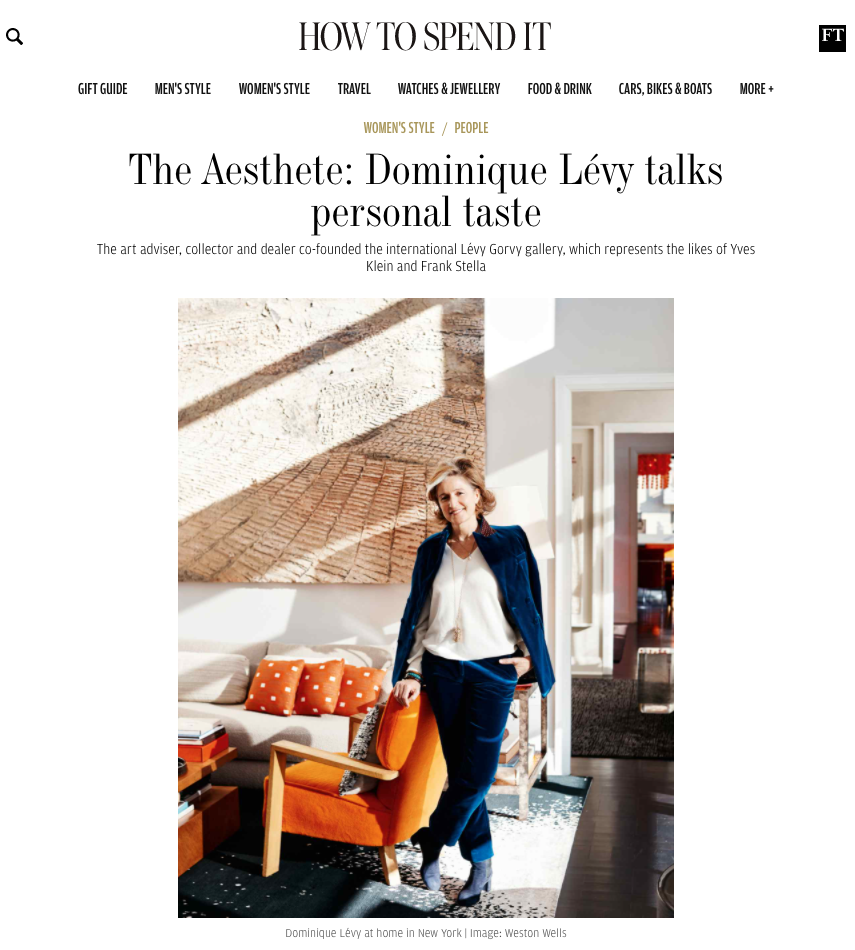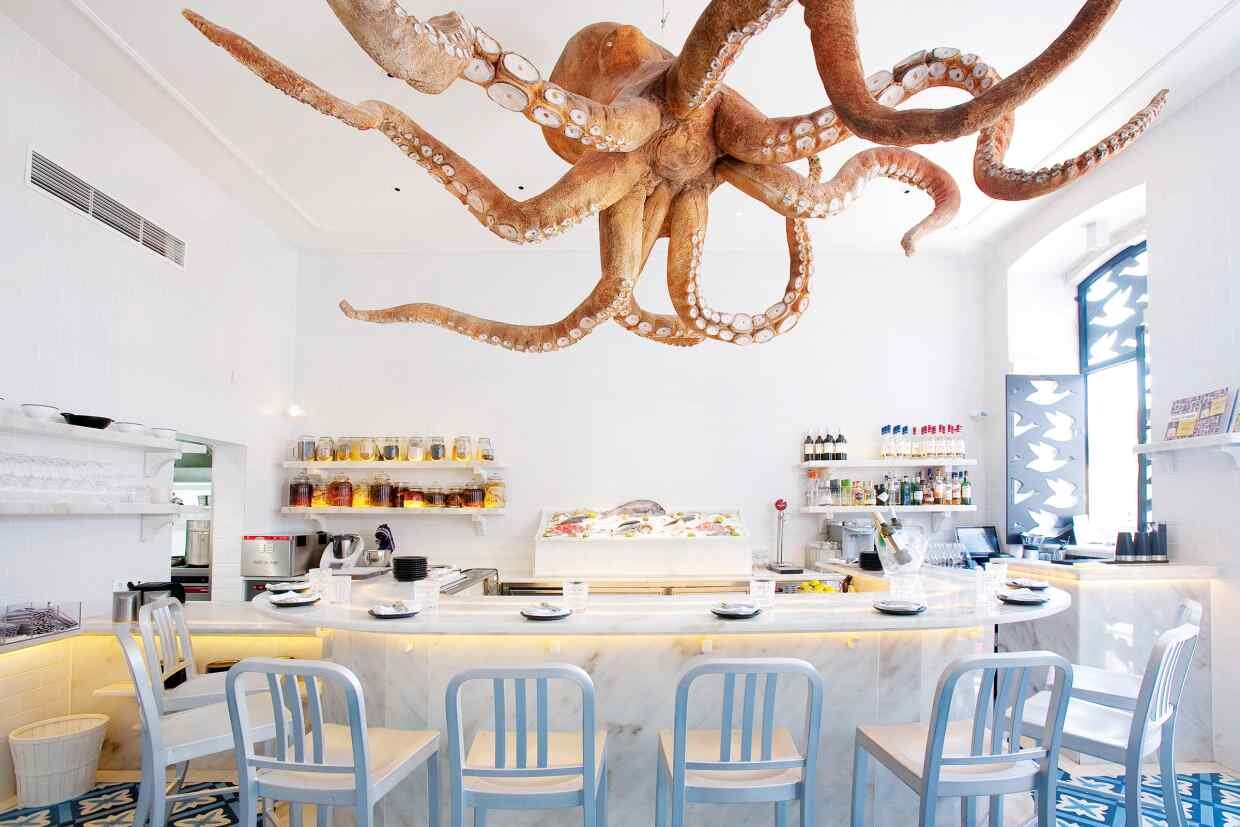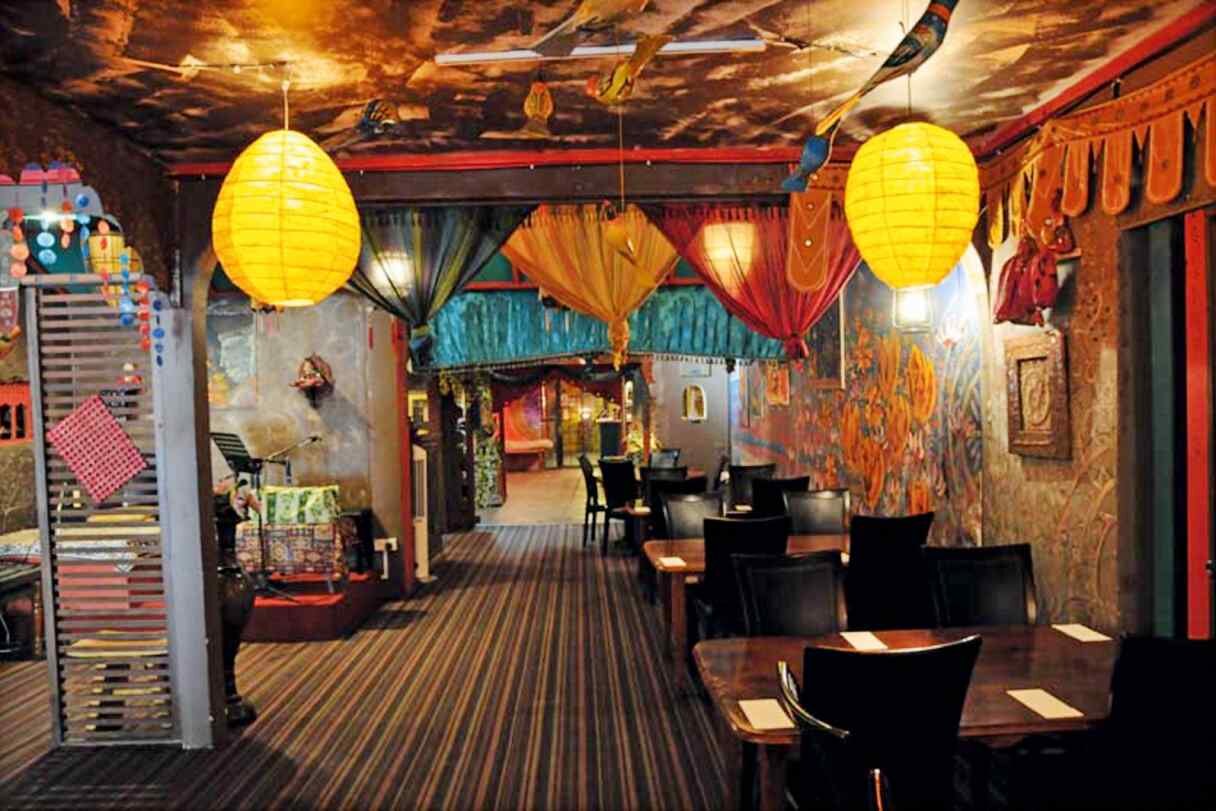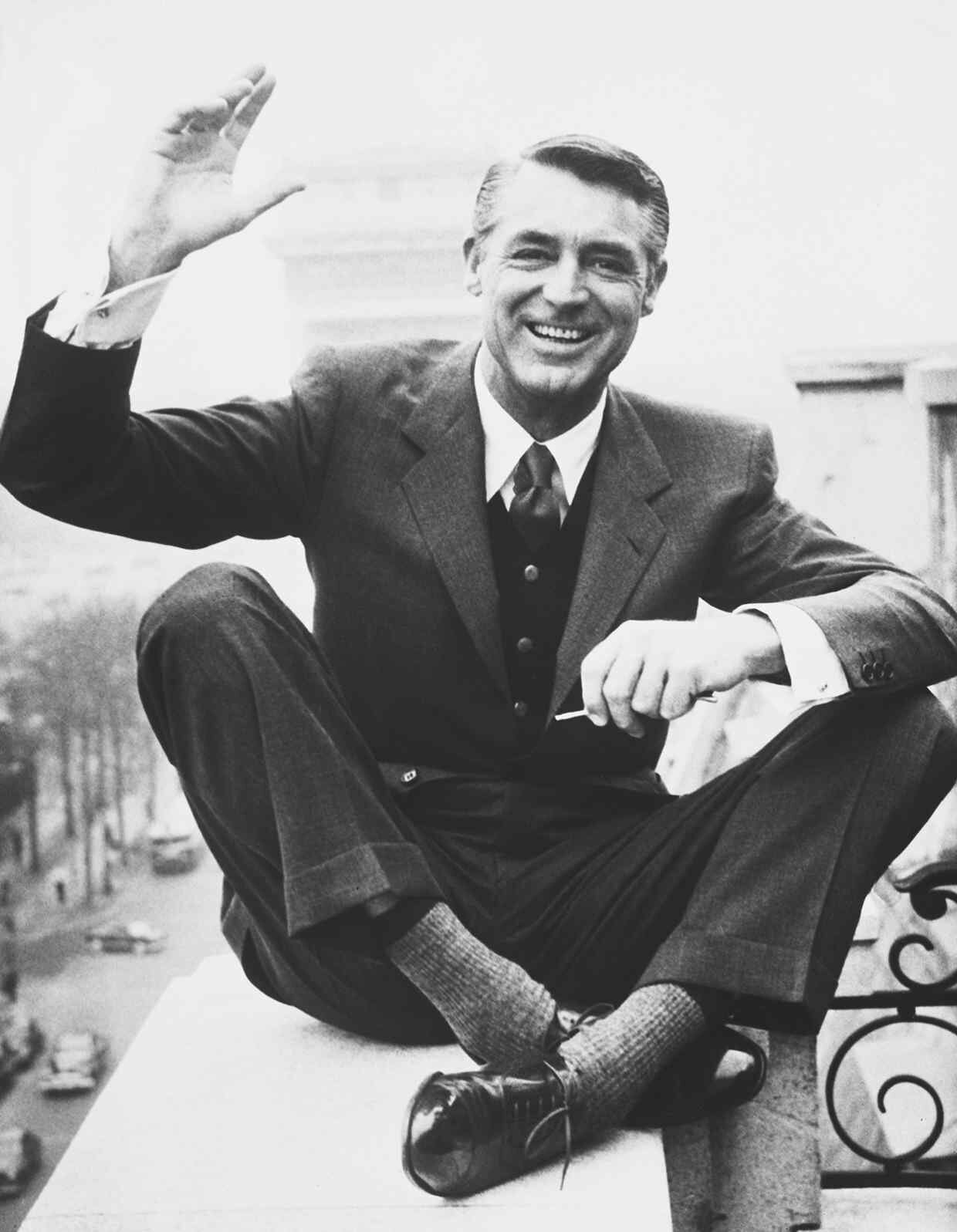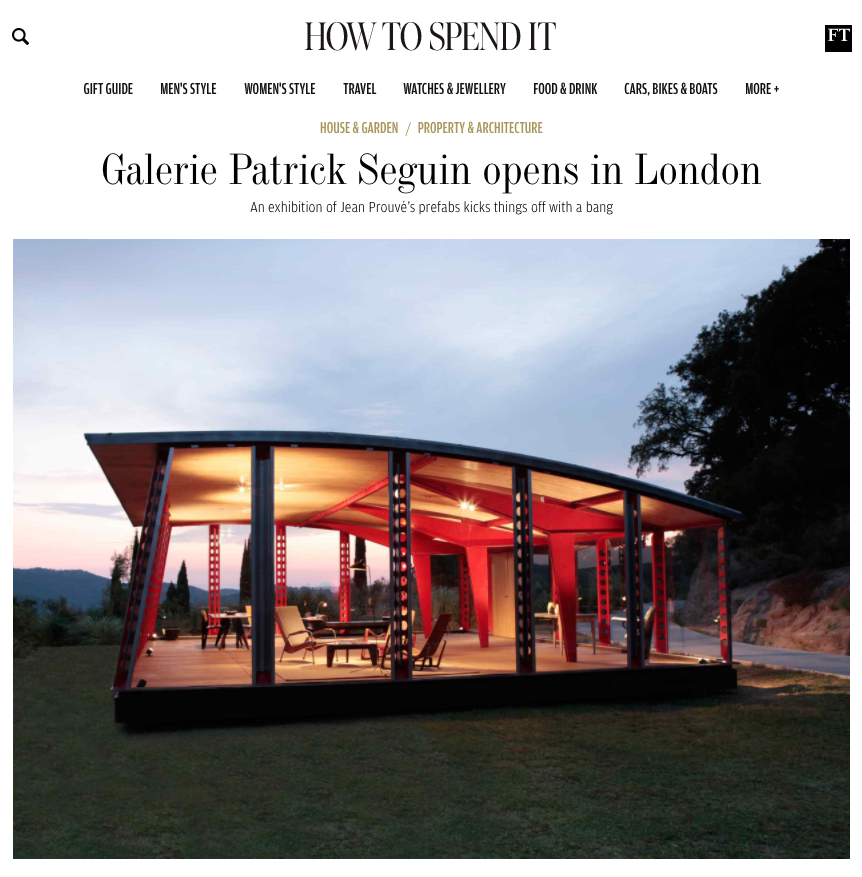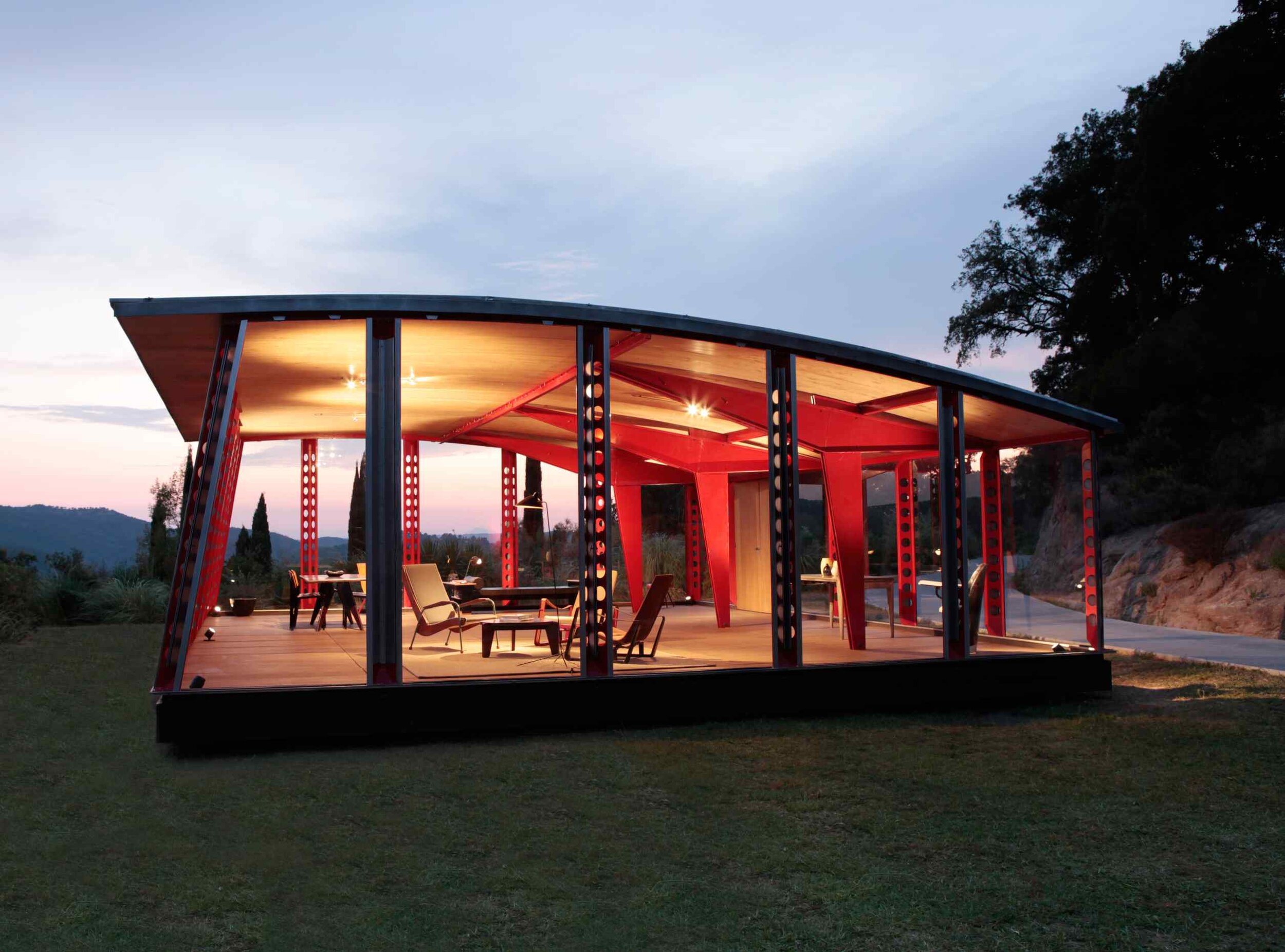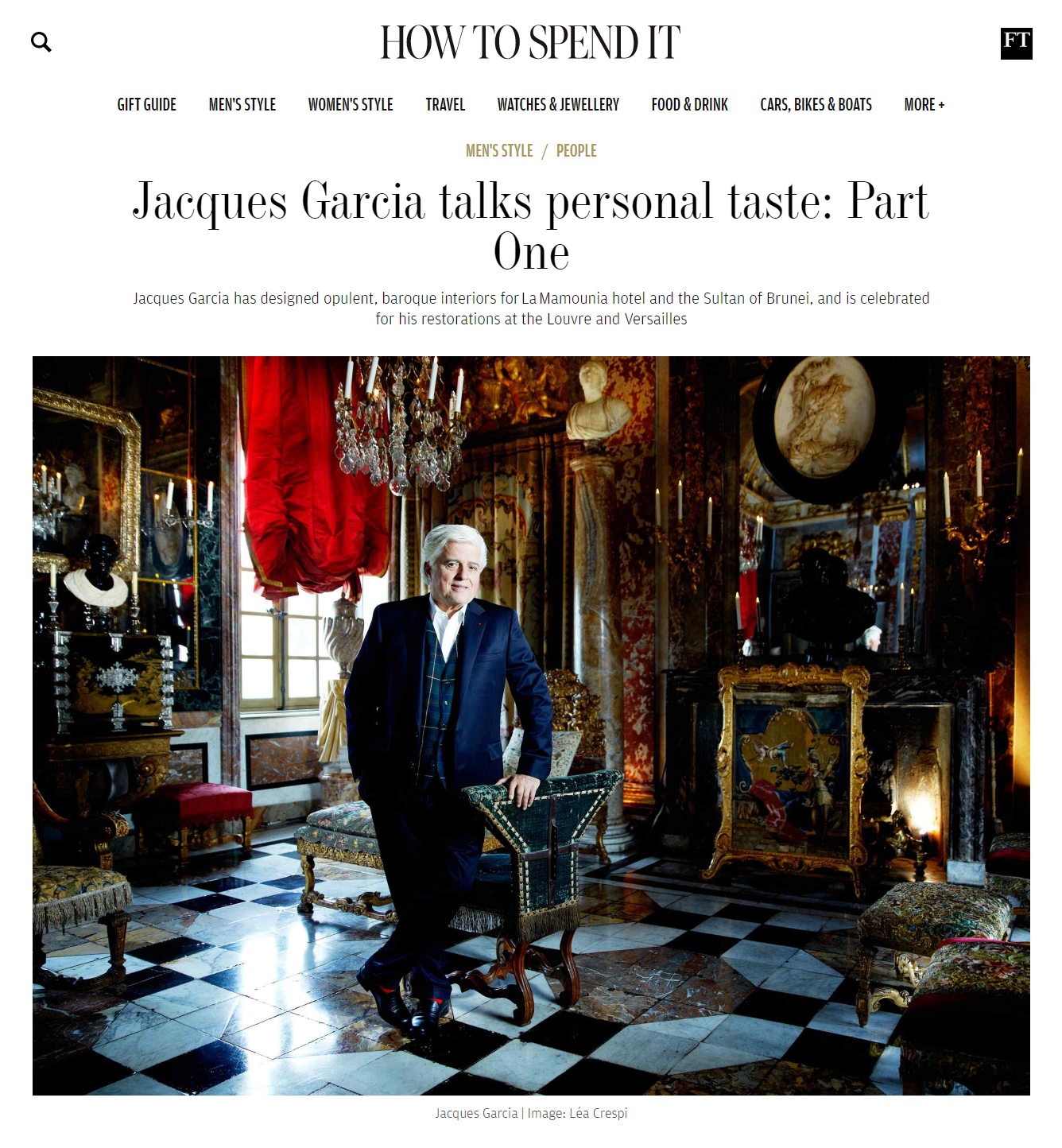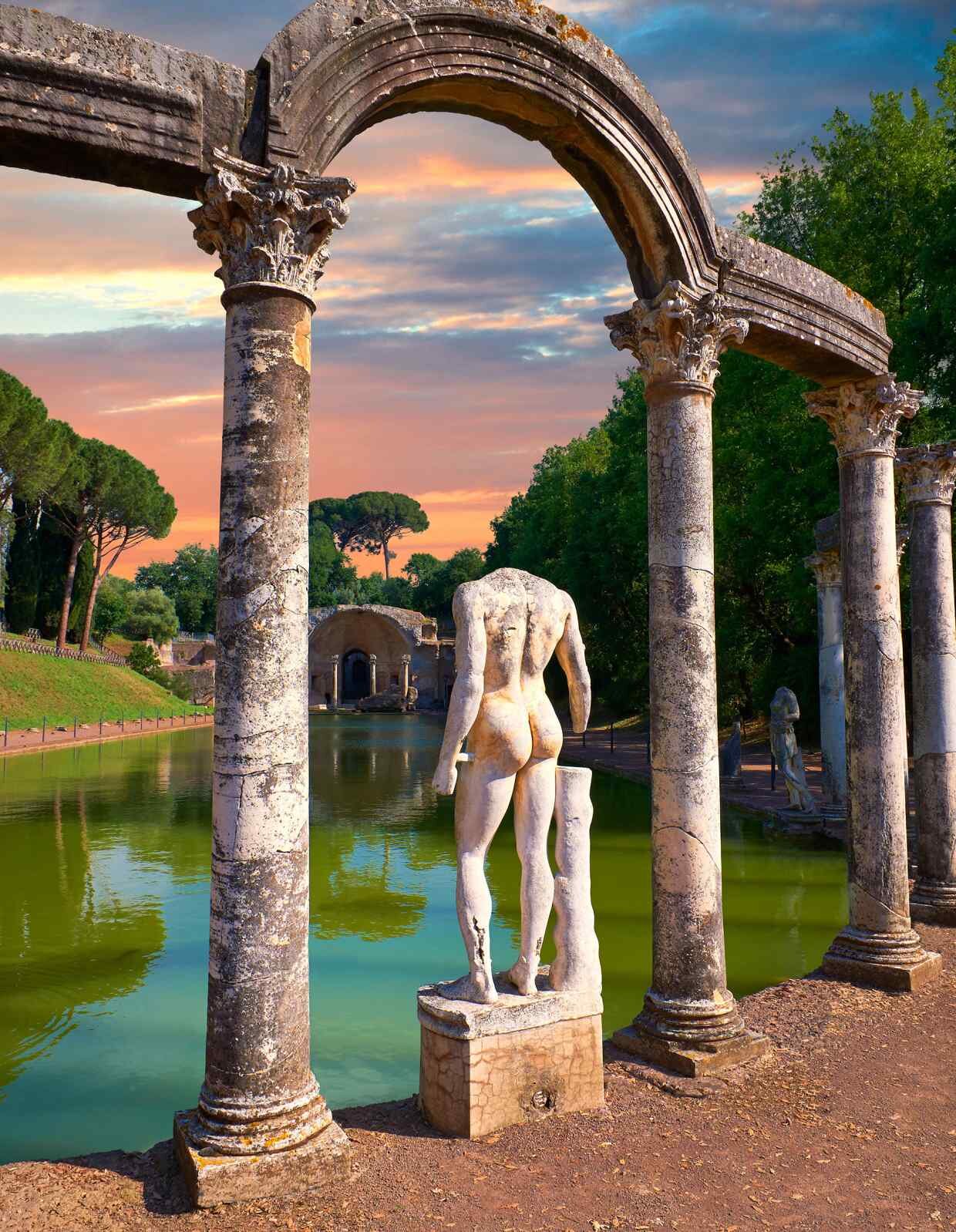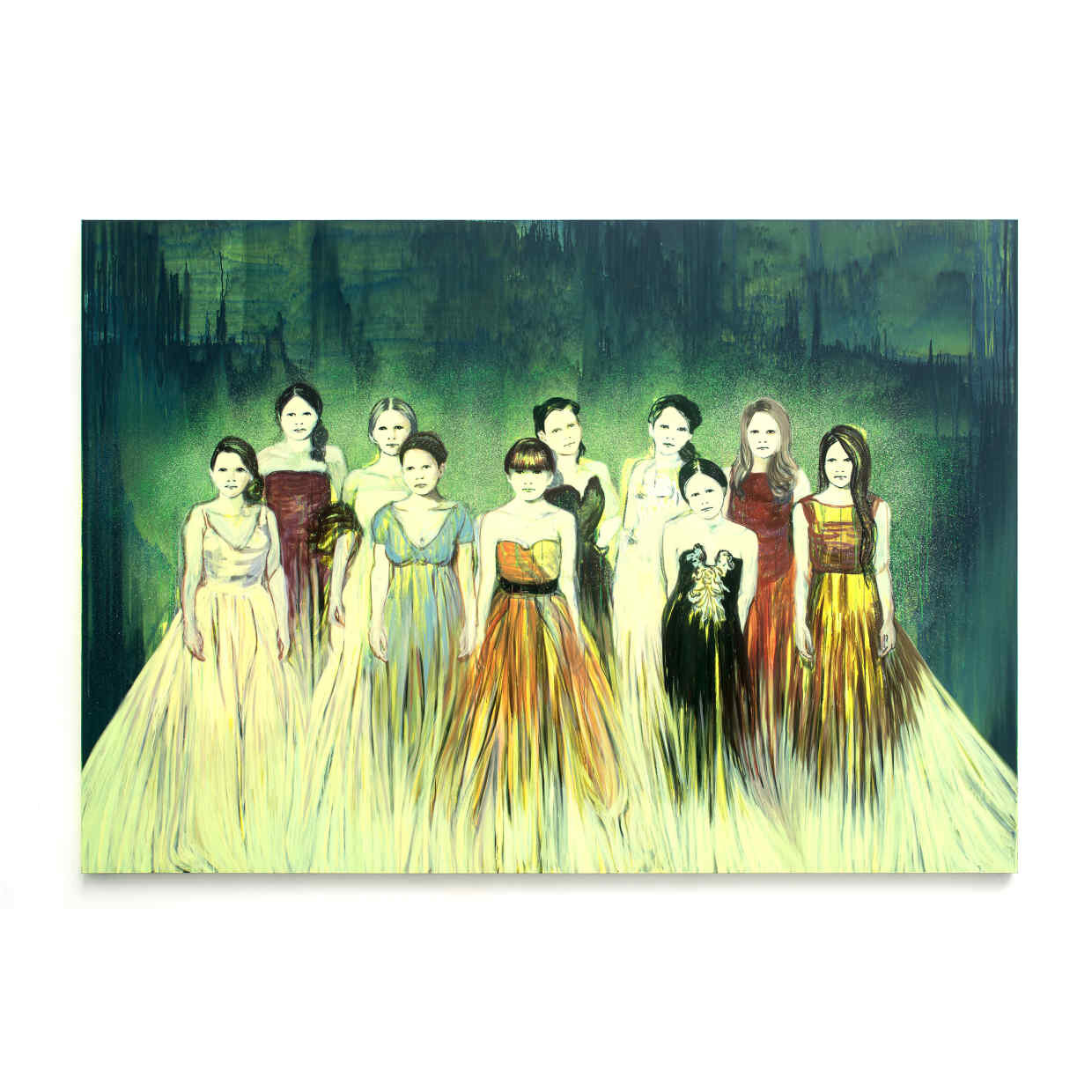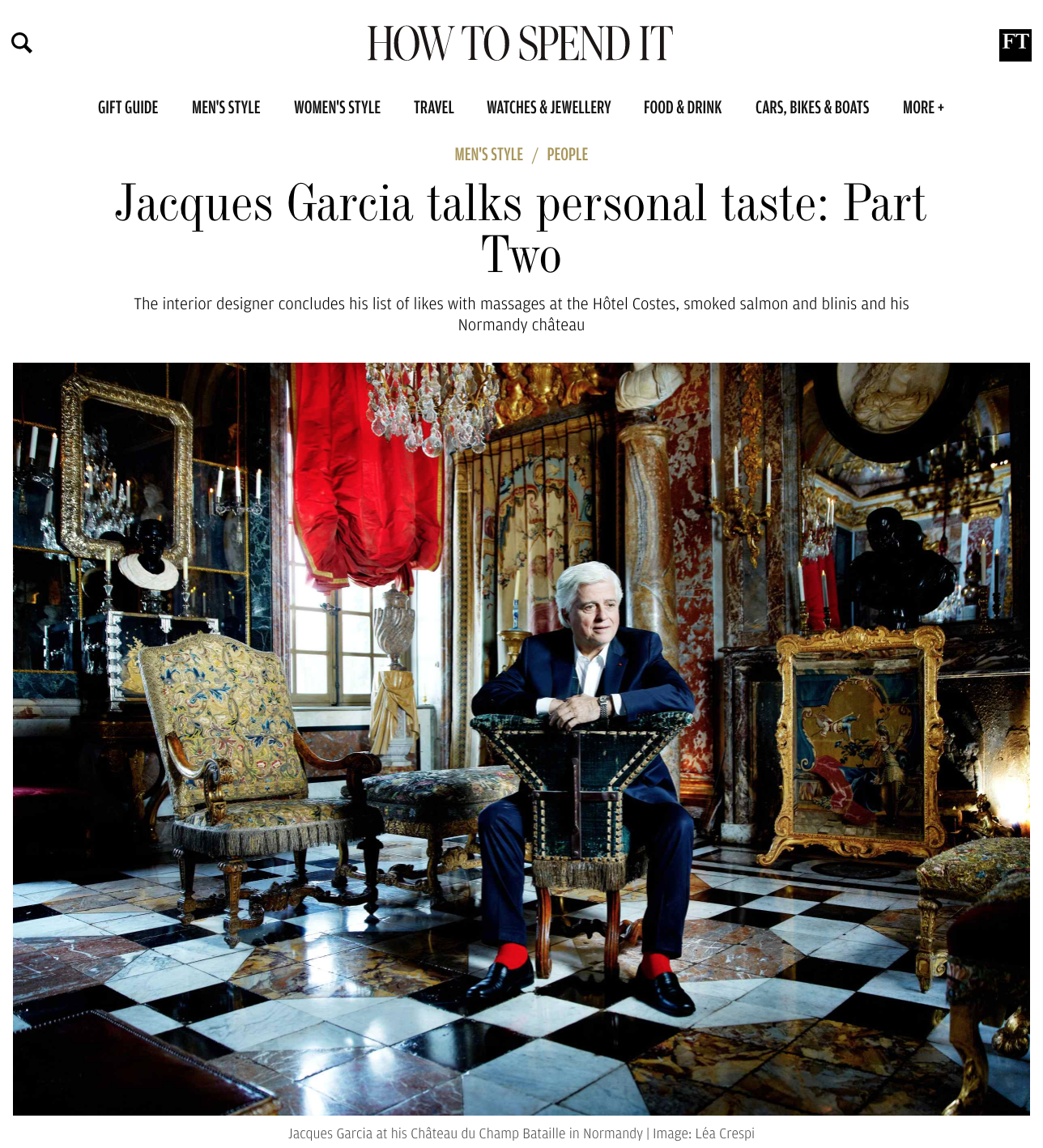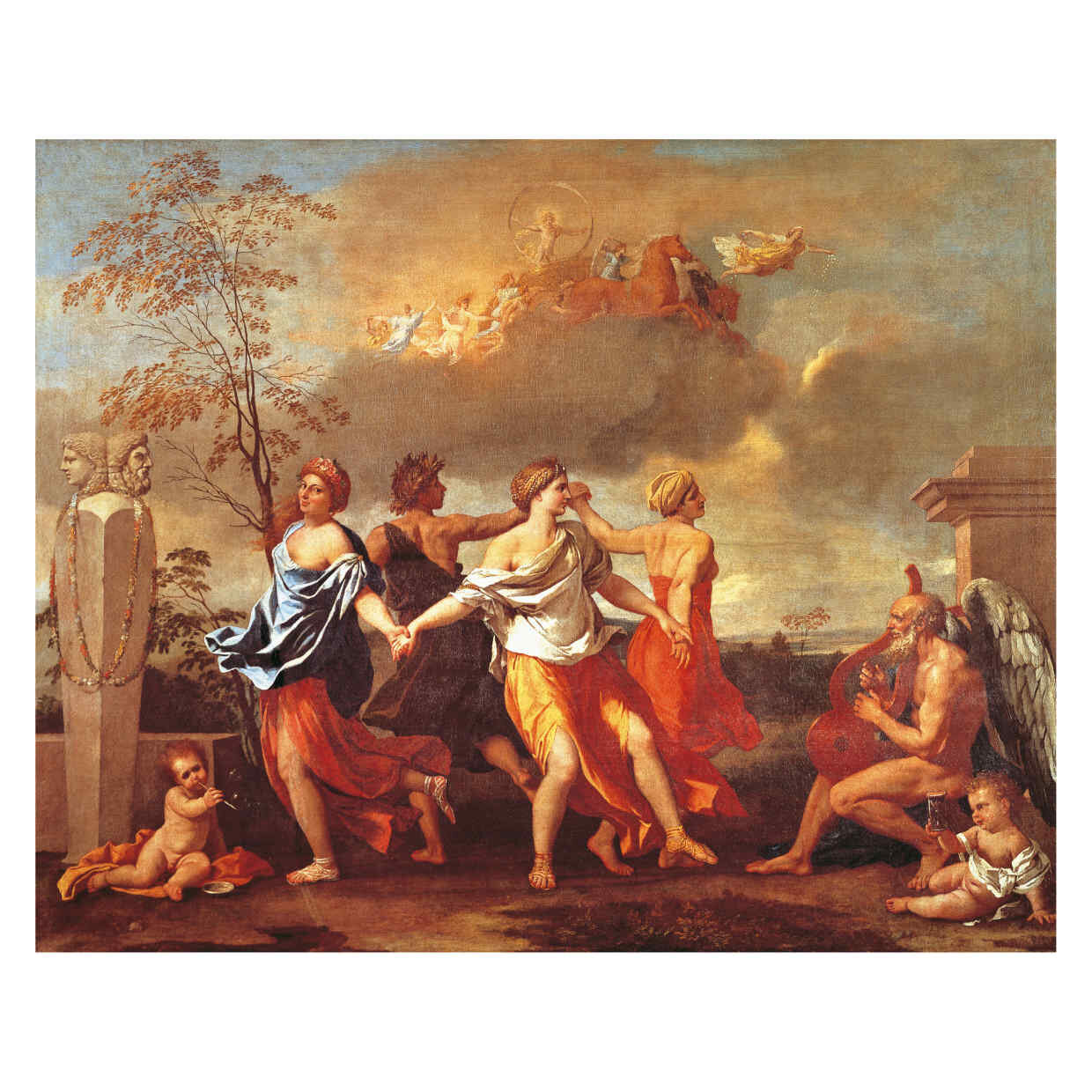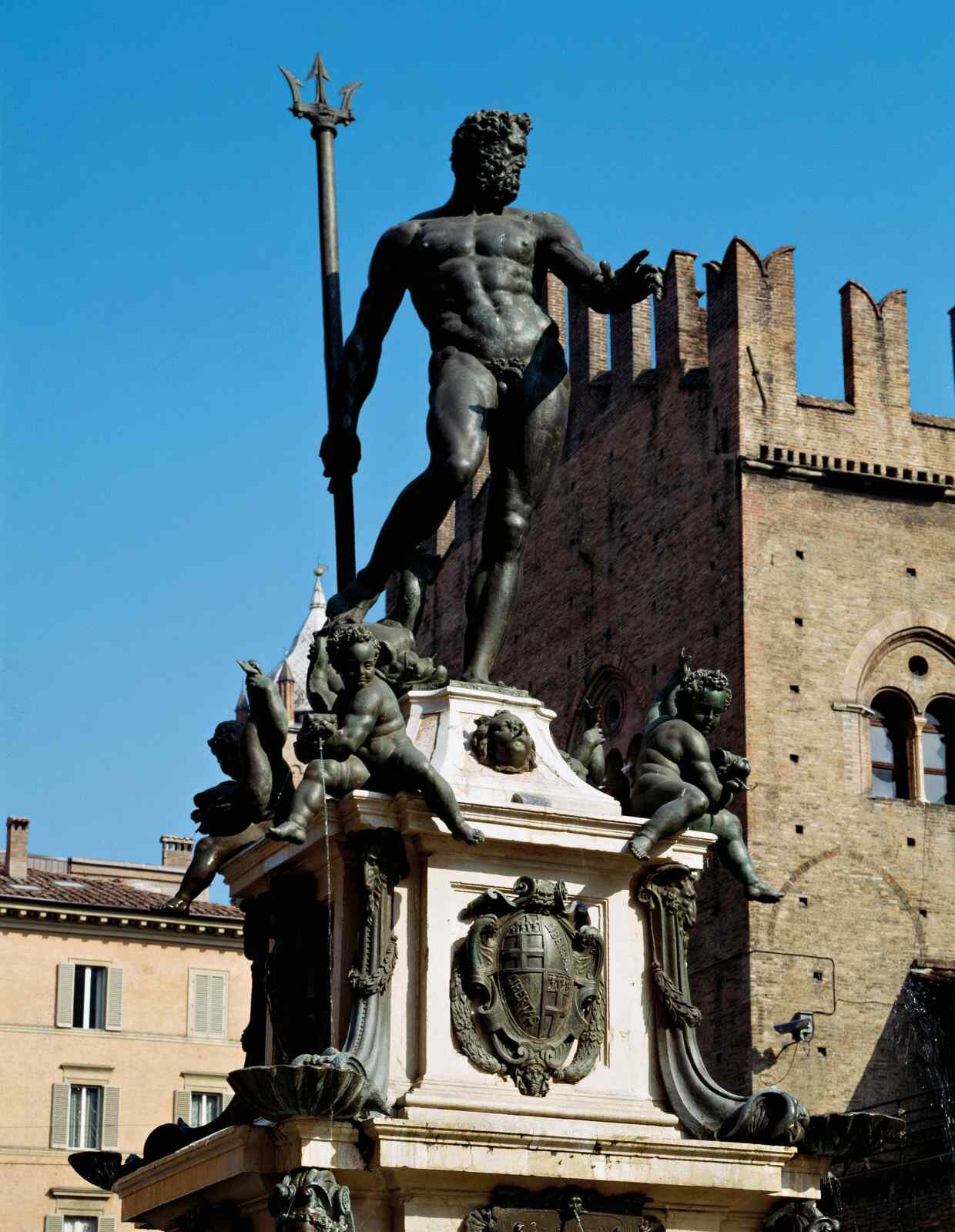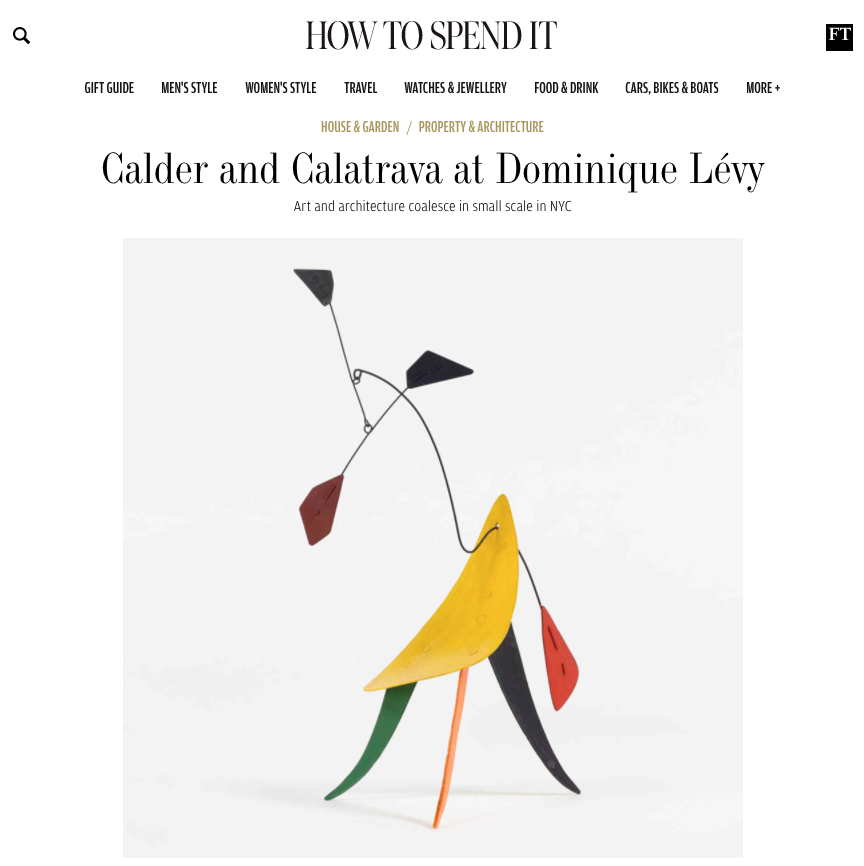Ken Fulk: ‘I dress up every single day – and have done since I was a kid’
The San Francisco-based interior designer has an eye for hotel ashtrays, Hinckley Picnic Boats and Thomas Jefferson’s former home
The San Francisco-based interior designer has an eye for hotel ashtrays, Hinckley Picnic Boats and Thomas Jefferson’s former home
My personal style signifier is a bow tie or tie. I dress up every single day – and have done so since I was a kid – and a tie is a great way to add an elegant or playful touch. I have a thousand in my collection and often get them made out of vintage fabric, but I also love a preppy Ralph Lauren tie that’s all about classic American style.
The last thing I bought and loved was a pair of jeans from Respoke, a company that repurposes vintage and new silk scarves – Hermès, Pucci, Gucci – into one-of-a-kind clothing and accessories. This particular pair of jeans has Hermès silk sewn on the sides at the outer seam, and there are unique handpainted details as well. Every piece they make – from bucket hats to espadrilles – is unique, which I love. respoke.com
And on my wishlist is a Hinckley Picnic Boat. They are made of Burmese teak with beautiful brightwork and contrasting navy and white hulls. This boat is straight out of the Italian Riviera – except it’s crafted in Maine. I’d love to have one at our home in Provincetown, on Cape Cod. hinckleyyachts.com
The best souvenirs I’ve brought home are ashtrays – so out of fashion yet often wonderfully designed. I have a vast collection of them from over the years, but I am always sure to ask before I take them. I particularly love the ones from the grand hotels of Europe – my ashtray from the Savoy in Rome is a particular highlight.
My favourite room in my house is my living room, aka “the treehouse”. Built in 1959, this room has 30ft-high barrel-ribbed ceilings, almost like a boat. It is made of unfinished redwood, which gives it this wonderful smell, and as the house is in a park-like setting [San Francisco’s Clarendon Heights], you don’t feel like you’re in a city at all.
The podcast I’m listening to is Bring a Friend with Anne Devereux-Mills, Adimika Arthur and Arielle Fuller. They host a group of smart, interesting women who discuss a range of issues from different perspectives. I was a recent guest – the second man on the show; US senator Cory Booker was the first – and learnt so much. I’m also obsessed with Ira Glass’s stories on This American Life.
A recent “find” is summer-tomato sandwiches on potato buns with mayonnaise from Pop+Dutch in Provincetown. They’re only available for a few weeks each year and they are beyond delicious.
My grooming guru is Doyle Lavarias, who gives me precision haircuts every three weeks. I am obsessed with a good haircut and he always delivers – either at his one-man shop or at my home. My wellbeing guru isn’t really mine, but I am pretty reliant on Peloton instructor Cody Rigsby. I’m addicted to Peloton largely because his classes are so fun, and it feels like a personal relationship. Doyle Lavarias, 1135 Ellis Street #A103, San Francisco, CA (+1408-876 7187). Cody Rigsby, @codyrigsby
The last music I downloaded was Sing to Me Instead by Ben Platt. I loved him in Dear Evan Hansen on Broadway and this debut album is just as beautiful because his voice is so emotive.
The design that changed everything for me was Thomas Jefferson’s home Monticello in Charlottesville, Virginia. It’s near where I grew up – I visited many times as a child and it had a huge impact on my own design sensibilities. It’s a neoclassical building, rooted in the past, and yet it still feels very modern.
In my fridge you’ll always find oat milk for my morning coffee and splits of Ruinart rosé champagne for guests. If you’re offered champagne, never refuse – or so the saying goes. I also always have really good pickles and an assortment of jams. I’m obsessed with jam and typically have four kinds of Bonne Maman: cherry, blueberry, apricot and raspberry.
The best gift I’ve given recently is a glorious painting called Nocturne by the artist Salvatore del Deo to my husband Kurt for his birthday. We are huge fans of 93-year-old Sal – so much so that we named our dog after him – and this particular landscape features a dramatic sea and sky, just after sunset. I typically like to give experiences, but art brings continual joy that will endure.
The main bedroom, with its vintage dog portrait © Brian Flaherty
His vintage Rolex – a recent gift © Brian Flaherty
And the best gift I’ve received recently is a vintage Rolex in its original case from the year of my birth. A friend gave me this classic stainless-steel watch as a thank-you during the pandemic and it was so thoughtful and unexpected, which made it even more special. It’s simple and practical – not flashy at all – so it’s perfect for me.
I’ve recently rediscovered the card game Canasta and card-playing in general. I enjoy the social yet competitive aspects of this particular game. Cards are old world, no-tech and fun.
The gadget I couldn’t do without is a juice squeezer for the fresh lime juice I use to make Margaritas. They come in playful colours and it’s just a simple, old-fashioned hand squeezer – no electricity involved.
The best book I’ve read in the past year is a signed first edition of The Story of Edgar Sawtelle by David Wroblewski. I actually re-read this book as it’s a big Herculean read and I wanted to really enjoy it. It’s the story of a mute boy, his mythical dogs and of his coming of age in the wild. It’s heroic and was even better the second time.
Bookshelves in the study © Brian Flaherty
Fulk’s Cartier bracelet © Brian Flaherty
An object I would never part with is a silver band on my wrist that my husband gave me on our first wedding anniversary, almost 30 years ago. It’s very simple, with just a slight ribbon of gold. The other thing I wouldn’t part with is a Cartier Love bracelet in platinum that I’ve worn for 17 years.
An indulgence I’d never forgo is extravagant hotels. I’m a hotel junkie and subscribe to the theory that the best room really does matter. A beautifully designed hotel changes your whole view of a place. I’d also have a hard time giving up cashmere sweaters by Leret-Leret and Lingua Franca, custom-embroidered with clever symbols or sayings.
I have a collection of more than 200 pairs of cufflinks. My father gave me his collection and it blossomed from there. I have quirky ones, elegant sets – and a pair of Playboy bunnies from the 1960s. My favourite is an eye-catching set by Fornasetti. I only wear vintage cufflinks, never new.
Fulk’s cufflinks collection © Brian Flaherty
His Thom Browne blazer © Brian Flaherty
The last item of clothing I added to my wardrobe was a green- and cream-striped Thom Browne rowing-style blazer. It has frayed edges and a slightly deconstructed look.
The grooming staple I’m never without is Ultimate Brushless White Eagle Shave Cream by Kiehl’s. It contains menthol, which is slightly numbing, and if it were ever to be discontinued, I’d buy it in bulk as it’s vital to my daily routine. $18, kiehls.com
My favourite apps are Dark Sky for the weather because I’m always travelling, and 1stDibs because it allows me to shop for really specific pieces – like a Jean Royère screen – from wherever I am in the world. It’s indispensable for my work.
The one artist whose work I would collect if I could is David Hockney. I love landscape and portraiture and he is a master of both, not to mention the breadth and length of his career. There is an optimism and joy in his art – especially in his beautiful pools – which I would love to live with.
Fulk in the entryway of his home © Brian Flaherty
My style icon is Gianni Agnelli – I love that Italian sensibility and confidence. Cary Grant was incredibly debonair as well. I’m not a streetwear kind of guy, so I like their sartorial style. Tom Ford once said something about not wearing soft-soled shoes when dressed up and I tend to agree. Looking put-together is important to me.
If I weren’t doing what I do, I’d be a movie director. Everything I do in my work is cinematic and every project begins with a script. Bringing things to life, in full colour, would be a natural extension of my design work.
The place I can’t wait to go back to is Villa Feltrinelli on Lake Garda, in northern Italy. It’s an extravagant, eccentric family-owned hotel that makes you feel like you are nowhere else. A glorious Riva boat whisks you off to lunch or for a swim, and while you aren’t looking, someone pops out to offer you a towel you didn’t expect.
Gary Tinterow: How To Spend It in Houston
Gary Tinterow, director of Houston’s Museum of Fine Arts, on the pioneering spirit of America’s third-largest city
Gary Tinterow, director of Houston’s Museum of Fine Arts, on the pioneering spirit of America’s third-largest city
Houston is a can-do city, a port city, so it has always welcomed the world – and it will soon be the third-largest city in the US. There is a culture here of optimism and possibility. That spirit drew me back to my hometown after 29 years at The Metropolitan Museum of Art in New York.
After the oil boom at the turn of the century there was great wealth generated here, and with that came civic-minded families focused on creating their own cradle of culture. As a result we have outsized arts institutions: The Museum of Fine Arts (Mies van der Rohe’s only museum in the US), The Hobby Center for the Performing Arts, the Houston Ballet, the Houston Grand Opera, the Houston Symphony. This commitment to artistic patronage continues today, and it’s the reason it’s easier to get things done here; in just a few years at the MFAH we’ve put up buildings by Steven Holl Architects and commissioned works by Ai Weiwei and Olafur Eliasson.
The Nancy and Rich Kinder Building at the Museum of Fine Arts
Olga Merson, 1911, by Henri Matisse, at the MFAH © Succession H. Matisse/Artists Rights Society (ARS) New York
The Menil Collection, not far from us, is another treasure. This Renzo Piano-designed museum with its Cy Twombly Gallery, as well as vast collections of abstract expressionist and pop art, is a must see. For a quick bite after a visit, I love Lua Viet Kitchen, just across from the museum, for excellent “Shaking Beef” – seared steak, watercress, jasmine rice and scallion oil.
Tinterow in the Lillie and Hugh Roy Cullen Sculpture Garden at the MFAH © Bryan Schutmaat
I spend a lot of my time in the Museum District, but for a green escape I’m drawn to the Buffalo Bayou Park Cistern. Alongside biking and running trails, the former cistern is now full of art installations. Galleries are another strength here; Hiram Butler is a MoMA alum whose gallery features modern American art by well-known and emerging artists alike. Sicardi Ayers Bacino is devoted to avant-garde modern and contemporary Latin American art, while McClain is very international in focus but with many Texan artists represented as well. The Project Row Houses – a series of shotgun-style houses that have been restored in Houston’s historic Third Ward – are an experimental art and enrichment community centre.
The Project Row Houses in the Third Ward © Peter Molick
Because of our diverse culture – from Mexican-Americans to people who come here from Central Asia – the cuisine in Houston is fantastically varied. When people think of “Mexican food” they’re often really talking about Tex-Mex. True Mexican food, which I adore, is exquisite and famous for its balance of flavours and moles – the thick, aromatic sauces made of ground up dried chillis and poured like a ragu over fish, fowl or vegetables. Two of my top spots for this are Hugo’s – where the baby pig is outstanding – and Cuchara, which is known for its Oaxacan mole made by female chefs. Ninfa’s is my favourite Tex-Mex joint and then Picos which specialises in regional Mexican cooking, which makes it a great place for experimenting with both cuisines. Outside of Mexican, I’m a huge fan of BCN – as in the Barcelona airport code – where chef Luis Roger, a student of Ferran Adrià, cooks refined Catalan cuisine.
The Menil Collection © Kevin Keim
I’m not much of a shopper, with two exceptions: good food and good books. At Phoenicia Specialty Foods in west Houston, you’ll find everything you need to make Middle Eastern and central Asian dishes, from spices and breads to pots and pans. For books, I go to Brazos Bookstore, Houston’s best independent bookseller, where you’ll often find University of Houston and Rice professors leading discussions. Some say there are two seasons in Houston: wet and dry. For six to nine months the weather is favourable, while in the summer, temperatures and humidity are in competition. From late-September through early-May, everyone is outdoors, exercising in the parks and verdant neighbourhoods. One winter highlight I try not to miss is the Houston Livestock Show and Rodeo at the NRG Stadium. It’s touching to see the young competitors with their livestock – and where else can you eat fried Oreos?
The Houston Livestock Show and Rodeo © Mark Felix/Getty
Tex-Mex at Ninfa’s © Becca Wright
When people come to stay, I often recommend the five-star Post Oak Hotel. I advised its owner, Tilman Fertitta, on the acquisition of works by Frank Stella and Alex Katz. In the Museum District there is Hotel ZaZa, with its spectacular skyline views. Then the Montrose area is home to a new boutique hotel, La Colombe d’Or, which fuses historic architecture with contemporary art. I’ve always been curious about lives different than my own and so I moved away for a time, but Southern politeness and manners drew me back. The crowd I’m seeing at the MFAH is much more diverse than what I saw at The Met in New York, so it feels like a dynamic time; Houston has really grown into its big city shoes.
How to pick up a rare piece of Charlotte Perriand furniture
Previously unseen works are going under the hammer at Sotheby’s forthcoming Parisian sale
Previously unseen works are going under the hammer at Sotheby’s forthcoming Parisian sale
Jacques Grange’s perfect weekend in Paris
The interior designer’s bold, eclectic style has won over clientele as varied as Francis Ford Coppola, Karl Lagerfeld and, most recently, LVMH’s Cheval Blanc resort in St Barths
The interior designer’s bold, eclectic style has won over clientele as varied as Francis Ford Coppola, Karl Lagerfeld and, most recently, LVMH’s Cheval Blanc resort in St Barths
“Saturday starts with eggs and bacon at Le Relais Plaza at the Hôtel Plaza Athénée. This old-world hotel is like a home away from home and it’s an important part of my weekend routine.
After breakfast, I’ll walk through the Tuileries and on to the Palais-Royal, where I love the garden and the galleries that surround it. Pierre Passebon’s Galerie du Passage is a treasure trove of 20th-century furnishings and decorative arts, as well as photographs and sculpture. Another stop is By Terry for fragrances. Terry de Gunzburg has created a subtle one I like called Bleu Paradis. If I’m in the mood for clothes shopping, I’ll stop at Victoire Homme just around the corner – great for casual jeans and jackets. For more formalwear, I’ll head straight to Loro Piana for shoes and impeccably tailored shirts.
After a morning of browsing, I’ll head to Saint-Germain-des-Prés for more art and antiques. It’s technically part of my “work”, but I love it. Galerie Alexandre Biaggi specialises in furniture and decorative arts from the late 1930s and early ’40s and is a must, as is Galerie l’Arc en Seine for 20th-century lighting and furniture by Pierre Chareau and Paul Dupré-Lafon. India Mahdavi is another highlight: fun pieces by a talented architect and designer.
I’ll stop for a late lunch at Brasserie Lipp – a classic spot with authentic food and the perfect Parisian atmosphere. The pot-au-feu here is the ultimate comfort food. It’s ideal for people-watching – I always sit downstairs, never upstairs, as it just doesn’t have the same lively feel.
Next up might be a visit to the Calder-Picasso exhibition at the Picasso Museum, or I might go to see the Oceania show at the Musée du Quai Branly – Jacques Chirac. The Musée Yves Saint Laurent is another wonderful institution – and not because I designed the exhibition spaces! I go for the interesting mix of retrospectives and new programming.
Saturday night is for friends. We will start with a drink in the magnificent garden at Laurent, followed by dinner at Le Duc. It’s so uncontrived – the food is fresh and simple and the room feels like a small, intimate club. I love fish and Le Duc excels at seabass and salmon tartare, followed by grilled red mullet or turbot.
Sunday morning begins much the same as the day before, but perhaps with Greek yoghurt and strong coffee and reading Le Figaro and the Financial Times. I like to walk when I’m in Paris, including all over the Marché aux Puces de Saint-Ouen flea market, and especially the Paul Bert Serpette antiques market for dealers such as Xavier Chollet, who specialises in 19th-century French and Italian art and furniture, and Olivier d’Ythurbide and Benoît Fauquenot for rare 17th- and 18th-century objets d’art. I can spend hours exploring before having lunch at the Philippe Starck-designed Ma Cocotte. The seabream ceviche and the beef tartare are favourites, but everything is excellent.
Sunday winds down over dinner with friends and since Le Stresa, my beloved local Italian, is closed that day, I’ll go back to Le Relais Plaza, where my weekend began. They have the best steak tartare in town and I love the art deco ambience. Chances are I will be travelling somewhere the next day, so I’m in bed early, ready for the week ahead.”
The Aesthete: Dominique Lévy talks personal taste
The art adviser, collector and dealer co-founded the international Lévy Gorvy gallery, which represents the likes of Yves Klein and Frank Stella
Dominique Lévy at home in New York | Image: Weston Wells
My personal style signifier is a piece of jewellery – a wearable sculpture, really – from my grandmother, by the artist César, to whom she was very close. It’s made of family heirlooms – gold and pearls – that were melted down and compressed into an amulet I wear as a necklace. It is the essence of my hero – my grandmother – and a whole life story in one accessory. I wear it to every art fair and opening.
Löffelobjekt by Beate Kuhn | Image: Weston Wells
The last thing I bought and loved was a ceramic piece, Löffelobjekt, by the artist Beate Kuhn. It has beautiful flux and movement and I was lucky to find it as her works are quite rare. Jason Jacques Gallery, 29 East 73rd Street #1, New York, NY 10021 (jasonjacques.com).
And the thing I’m eyeing next is a thick cashmere sweater bearing the slogan “Meditate” by California-based label The Elder Statesman. I like the story behind this maker and also that it’s in the bold colours of the flag of my birthplace, Switzerland. $1,555; elder-statesman.com.
Elder Statesman cashmere Meditate sweater, $1,555
The last meal that truly impressed me was at Sushi Noz in New York. It’s an eight-seat place with an authentic 19th- century Japanese Hinoki counter, and the entire omakase presentation was just perfection. The cedarwood finishes and subtle lighting set the stage for chef Noz’s memorable yellowtail sashimi and other small, flavoursome plates. 181 East 78th Street, New York, NY 10075 (sushinoz.com).
Sushi Oz, an eight-seat Japanese restaurant in New York
And the best souvenirs I’ve brought home are stones from the beach on Antiparos in Greece. I collect stones wherever I go, but these are in shades of pink and white and subtle green. I keep them in vases in my office as well as in my Hamptons home, and I am constantly adding to and editing my collection.
Stones picked by Lévy from the beach on Antiparos in Greece | Image: Weston Wells
New York’s La Mercerie, an “eating and shopping” space
A recent “find” is La Mercerie in SoHo in New York – a very special “eating and shopping” environment overseen by a wonderful French chef. The food is delicious and the atmosphere feels like being in someone’s home. After a recent meal I bought a fabulous set of placemats. It all feels like Paris meets Amsterdam, but in New York. 53 Howard Street, New York, NY 10013 (lamerceriecafe.com).
The best gift I’ve given recently was a 24ct- gold bangle by jeweller Aurora Lopez Mejia to someone special. Her bracelets are very personal, made up of significant numbers and letters, which make her pieces one of a kind and very meaningful. From $18,000; auroralopezmejia.com.
The indulgences I would never forgo are very dark chocolate and Japanese whisky – but not necessarily together! Villars from Switzerland is my chocolate of choice; it’s made without added sugar and I like to snack on it throughout the day. In terms of whisky, I love Hibiki, which combines subtle woody and sweet flavours. Hibiki, £64.95 for 70cl; thewhiskyexchange.com. Villars, about £2.50 for 100g; villars.com.
My favourite room in my house is my dining room. I can be en famille or entertaining 20 and it always feels cosy. The sculptural centrepiece is a table with bronze feet by artist Alma Allen that I commissioned for this room. And a handblown chandelier by glass artist Jeff Zimmerman just makes the whole space work.
A long weekend in Lisbon with Alexandra Champalimaud
The Portuguese-born interior designer divulges the best of her hometown’s timeless charms, architecture and delectable food to Christina Ohly Evans. Portrait by Pedro Guimaraes
The Portuguese-born interior designer divulges the best of her hometown’s timeless charms, architecture and delectable food to Christina Ohly Evans. Portrait by Pedro Guimaraes
I was born in Lisbon and lived in this magnificent city until my mid-20s, so to me it will always be home. It sits at the edge of the wild Atlantic Ocean, on the scenic Tagus River, and is built across seven hills, so it’s like no other city in the world – because of the extraordinary light, the diverse architectural styles and, most importantly, the people. The Portuguese are truly warm, welcoming and nurturing – playing host is second nature to them.
Much of Lisbon was built between the 16th and 18th centuries. Portugal was one of the great trading nations and had some of the most prolific navigators, including Vasco da Gama; it imported silks from Asia and India, and exotic wood from Brazil, and also craftsmanship that can be seen in the romantic detailing that graces the romanesque, baroque and manueline [late gothic] churches that are found everywhere.
A Cevicheria in Baixa – a great place for fish | Image: Francisco Rivotti
The city is like a conglomeration of small villages – each one rooted by a church – that contain real architectural charms hidden behind doors, often exquisitely carved. You’ll find buildings with glorious scaled windows reminiscent of the English Georgian period. The cobblestone streets are like labyrinths, and the brightly coloured façades and abundant sunshine add to the historic atmosphere.
Visitors are spoilt for choice with hotels – they run the gamut from large and lavish to much more intimate. One of my favourites is the Bairro Alto Hotel between atmospheric Bairro Alto and Chiado. It’s full of charm, with incredible views of the Tagus; it’s basically the embodiment of the Portuguese lifestyle. I highly recommend sitting at its Terraço BA bar at sunset – glass of port in hand, of course – before moving on to the excellent Flores do Bairro restaurant downstairs for its roasted octopus and tomato rice. Another favourite is the Four Seasons Hotel Ritz, which is absolutely glorious – I often find inspiration for my own work in this hotel. It was built in the late 1950s and is incredibly elegant; it overlooks Eduardo VII park with its very stylised terraces, and is close to all the chic shopping on Avenida da Liberdade. For a quieter setting, I’d suggest the Olissippo Lapa Palace hotel. It’s in a very tranquil residential area, has a lovely pool, ocean views and a casual restaurant called Le Pavillon that’s perfect for a light alfresco lunch.
The Baixa-Chiado district – the city centre – is great for its mix of small shops; there are lots of silversmiths and assorted artisans. Leitão & Irmão on Largo do Chiado is a traditional gold- and silversmith that specialises in jewellery and decorative objects. Vista Alegre is a must for old Portuguese porcelain, especially the gorgeous blue variety, but also for the green cabbage-motif plates that are so popular – they originated in Portugal. This area is also home to numerous antiques shops, where you’ll find maritime artefacts from the East India Company’s explorations of China. And one of my favourite sources of fine linens is here: Paris em Lisboa, a charming shop in the Chiado that specialises in white-on-white embroidered sheets and linen hand towels.
This neighbourhood is also a great spot for lunch, and Belcanto, with its chic setting, is probably its best place. The chef, José Avillez, has two Michelin stars, and his delicious food has Portuguese flavours but reflects a global approach to cooking. For a traditional bica – espresso – I always recommend the art deco-style Café a Brasileira. It exudes old-world elegance and there are works by important Portuguese painters such as José de Almada Negreiros. To just sit here on a long bench with pleasant strangers and savour a pastéis de nata– a traditional egg-custard tart – is a very Lisboan thing to do. As you explore, you’ll notice that the pavements are dotted with beautiful black and white cobblestones. I always tell friends to wear comfortable flats, because while Portuguese women have mastered the art of wearing heels on these uneven stones, most tourists have not.
Café and pastry shop Pastéis de Belém, a great spot for local colour | Image: TPHOTOS
Another must is a walk – or tram ride – up to Alfama, which is the city’s oldest quarter. You’ll be met with gorgeous views of rolling greenery, the Tagus and all the towering churches below. At the very top sits the Portas do Sol [Doors to the Sun] garden and the majestic citadel Castelo de São Jorge. This area is home to some of the most incredible Portuguese crafts; you can view them at the Decorative Arts Museum and its adjacent workshop. It’s amazing to watch the centuries-old gilding, leather binding, inlaying and woodworking still going on; such is the level of skill here that the Louvre entrusts the restoration of its books to these artisans. You can have a perfect lunch on the terrace at Chapitô à Mesa – an incredibly charming place with several different rooms and wide city views – before exploring the area’s churches. The 12th-century Sé Cathedral and the Magdalena Church are two of my favourites – so intimate and full of beautiful tile work.
Fado is Lisbon’s traditional folk music, incorporating mandolins and guitars, and you’ll probably hear it wafting through the streets in Bairro Alto and Alfama. You can just step into any casual tavern for a simple meal and listen to this wonderful singing; it sounds a bit like country music – the lyrics are usually about love and loss – and is always telling a big story.
The reception at Bairro Alto Hotel is overlooked by a mezzanine bar
It’s worth a quick trip just outside town to see the 15th-century Jerónimos Monastery, a glorious white marble cathedral built in the manueline style, with its intricate gothic detailing and classic gardens. You can also wander across the nearby bridge to explore the yachting centre; the seaside atmosphere is perfectly Portuguese, as is a lunch of battered fish or octopus and potato salad at Alcântara. My other choice, always, for seafood is the bustling Doc Cod, located at Santo Amaro docks, overlooking the river and the iconic 25 de Abril Bridge.
Once you’ve fuelled up, why not go to see the nearby Torre de Belém, which is an ode to the Age of Discovery. The modern concert hall is a beautiful, Carlo Scarpa-type structure with incredible acoustics. Afterwards, a great spot for local colour is café and pastry shop Pastéis de Belém; its signature Bolo Rei fruitcake is legendary.
The view of the ocean from the Torre de Belém | Image: Gabriele Croppi/ SIME/ 4Corners Images
If you only do one museum, it should be the Museu Nacional de Arte Antiga, also called the Museu das Janelas Verdes for its location on the “Street of Green Windows”. It’s in the Palácio de Alvor, a former palace of the Count of Alvor, and exhibits incredible jewellery and precious stones from the 18th century, as well as inlaid furniture and decorative arts that date from the Middle Ages through to the 19th century. The Calouste Gulbenkian Museum is much smaller – a real gem – and contains one of the world’s greatest collections of Lalique jewellery.
But any visit to Lisbon should focus on food and drink. Anything involving cod, particularly bacalhau that’s been salted and dried, often takes centre stage on a menu. One of the best restaurants for authentic Portuguese food, and generally a festive night out, is A Travessa in the Bairro da Madragoa area. It’s housed in a 17th-century convent and the atmosphere is magical. Gambrinus in Baixa is the place to go for fresh fish – try the olive oil‑marinated mackerel or the amazing shellfish soup. The unassuming A Cevicheria is another great spot to enjoy fish, such as grouper or corvina [croaker] ceviche marinated in lime juice, along with a delicious Pisco Sour.
Unlike other European cities, Lisbon remains remarkably unchanged through history. Its slower pace of life is centred around family and friends. From the beautiful architecture to the artisanal shops and gourmet delights, I can’t think of any other capital city that still truly charms the way it does – and that feels so personal. When you come here, stress will feel a million miles away.
A long weekend in Kuala Lumpur with Jean-Michel Gathy
The Brussels-born architect shares culinary highlights, clean green spaces and local craft troves in his adopted hometown with Christina Ohly Evans. Portrait by Ian Teh
The Brussels-born architect shares culinary highlights, clean green spaces and local craft troves in his adopted hometown with Christina Ohly Evans. Portrait by Ian Teh
What makes Kuala Lumpur special is its people. They’re a wonderful mix of Malay, Chinese and Indian, all considered equally important, so everyone is kind to each other. They are genuinely friendly and welcoming, and since everyone speaks English, a visit is very easy. The racial mix means a rich variety of foods, types of worship, ways of dressing and also, of course, different kinds of architecture. The diversity, tolerance and acceptance of everyone: these are the city’s most powerful assets.
The dramatic golden statue at Batu Caves | Image: Getty Images/EyeEm
If you like celebrations – and particularly fireworks – then this is the place, as there are holidays and festivals for the country’s myriad faiths throughout the year. Because of its variety of religions, Malaysia has earned itself the reputation of having one of the highest numbers of public holidays in the world. And in KL, there’s almost always something fun going on.
Because Malaysia was a British colony until 1957, the courts of law, the infrastructure, the police and the medical systems are all very balanced, much like you’d find in western Europe. Despite Kuala Lumpur’s lush, tropical feel – we’re basically on the equator – with the jungle that surrounds the city, you will still feel quite at home here as a foreigner.
Passage Thru India restaurant, which has a magical atmosphere and a memorable prawn masala
The city is a bit like Singapore in terms of its urban landscape, but I think of it as a more of a residential-feeling, cosy place. We have rain every day, which is good for the palm trees, the many golf courses and our public parks, and because we’re so close to the sea – it’s just 30km away – I think KL must be the world capital for incredibly dramatic lightning. I often recommend the very central Shangri-La hotel, not just because my office is there, so I gravitate towards it, but because everyone is drawn to the buzzing lobby. I’m a big fan of its Japanese restaurant, Zipangu, where the uni sushi is fantastic, but so is the hotel’s Sunday brunch in the Lemon Garden restaurant. Next to the city-centre KLCC Park, just below the iconic Petronas Twin Towers, is the Mandarin Oriental, where rooms with floor-to-ceiling windows overlook all the greenery, and there are great views from its MO Bar too. I think it’s the best location in the city – but almost as good is the Grand Hyatt, which is just 300m from the towers and has a very contemporary look.
Malacca has many ornate temples and makes for a great day trip out of Kuala Lumpur | Image: Alamy Stock Photo/Adrian Baker
KL has many suburbs, and each has a weekly market with a mix of Malay, Chinese and Indians selling goods of all kinds. In Petaling Jaya, for example, you’ll find day and night markets with every single kind of fruit and an abundance of vegetables. But the fish stalls are the stars – it’s not so much about the butcher here – and they sell everything from seabass to prawns to rock lobsters, as well as famous local dishes: nasi goreng, or fried rice, and nasi lemak, a mixture of rice with coconut milk, cucumber, chicken or seafood, and egg, which is delicious.
The lobby of the city’s Shangri-La hotel is a popular meeting place
People don’t really entertain at home in Malaysia, so restaurants with all types of cuisine to choose from are plentiful. To enjoy real Malay food, I send people to Bijan, for the nice ethnic feel – soft lighting, stone floors and wooden screens; it’s quite romantic – and the classic kerabu pucuk paku, the local fiddlehead fern salad, which is very good. The Chinese restaurants here tend to be the opposite: overlit, quite noisy and always very showy. But South Sea Seafood in Kampung Baru Subang and Hakka Restaurant in Jalan Kia Peng are both reliably good – bright and festive, and offering good versions of standards like spring rolls and stir-fried crab. The Indian restaurants here are visual feasts, always red or pink – they worship these colours! – with lots of gold decoration. The best place for prawn masala and all kinds of roti is Passage Thru India, with its magical, slightly exotic atmosphere.
One of the best go-to restaurants in general, though, is Marini’s on 57, a lively Italian spot on the 57th floor of a building next to the Petronas Twin Towers – from the terrace, it feels as if you could touch them. The cocktail bar has good music and is always full of stylish people – it’s the place to be. And the founder of the restaurant, Cavaliere Modesto Marini, has another restaurant called Marble 8 that serves the best steak in town.
There are so many cultural highlights in KL, but top of the list is the Hindu temple Sri Mahamariamman. It’s the oldest (and richest) temple in Kuala Lumpur, founded in 1873 at the edge of Chinatown, on Jalan Tun HS Lee. The Batu Caves is another Indian temple in the limestone hills near the city; it’s in a very dramatic grotto and has a tall golden statue at the base of a staircase that leads visitors up to the snug cave temple. It’s not for everyone, because it can be a messy walk, but I think it’s really worth making the trip. The city’s main mosques – Masjid Jamek Sultan Abdul Samad and the National Mosque of Malaysia – are both must-sees; the latter is set in 13 beautiful manicured acres and holds 15,000 people. And my golfing friends are always happy about the 15 courses within about a 10km radius of town, including the famous Kuala Lumpur Golf & Country Club, where they host PGA and LPGA tournaments.
For real local immersion, I always recommend Bangsar Shopping Centre, where you’ll find a little of everything: spa and beauty products, clothes, shoes and a massive food hall. It has a very local feel – it’s not at all about big chain stores. One of my favourites to browse in is Jasons, the food hall, which has other locations in Singapore and Hong Kong and is basically a department store for all things edible. The huge selection and incredible lighting make it special, and its mangoes, my favourite fruit, are the best. For jewellery that’s influenced by Asian culture and mythology, it has to be Lotus Arts de Vivre: it makes use of raw natural materials – seeds, coconut shells, scarab wings, ebony and precious woods, sea shells, bamboo – and you’ll see wonderful examples of traditional craft techniques.
It’s well worth exploring KLCC Park in the middle of town. It isn’t Hyde Park or Central Park, but it is 20 beautiful hectares and makes the city feel so clean. It’s a wonderful place for children to play and there are running tracks too. For a city escape, take a day trip to Malacca. It’s just 120km south of KL and, since it was variously a Dutch, Portuguese and British colony, there’s an unusual mix of architecture with many ornate temples and a lovely harbour.
Kuala Lumpur is growing rapidly – we have good subways, elevated trains and everything is wired, which makes a visit here very user-friendly. But I hope it keeps its private, slightly homey feel, because when things get too urban, you lose the intimacy. Most of all, I love the genuine kindness of the people; they are what will continue to make it such a special place.
The Aesthete: Rodman Primack talks personal taste
The Design Miami Basel executive director is also the founder of New York art and design practice RP Miller
The Design Miami Basel executive director is also the founder of New York art and design practice RP Miller
My personal style signifiers are the casual jackets that I wear every day. I like navy ones by Dries Van Noten, or Austrian collarless versions that I have made for me at Hans Frauenschuh, Leder & Tracht. I wear the latter year round – in boiled wool or in linen for summer – and I love their horn buttons and the attention to detail. Because I fly so much, I always wear an I Pezzi Dipinti cashmere scarf, or one of the vintage Japanese handkerchiefs I get at Kapital in Tokyo, which are cowboy style. Dries Van Noten, +323-470 2510; www.driesvannoten.be. Hans Frauenschuh, Leder & Tracht, +43535-664 337; www.hansfrauenschuh.at. I Pezzi Dipinti, +1212-941 9966; www.ipezzidipinti.com. Kapital, +8135-725 3923; www.kapital.jp.
Primack’s Cowhide/Fried Egg painting by Math Bass, from Overduin & Co
The last thing I added to my wardrobe was a Gucci bomber jacket by Alessandro Michele. It reminds me of a traditional US varsity jacket, with blue and red knit cuffs, and it is embroidered with an amazing hornet. I’m planning to wear it all winter. www.gucci.com.
The last thing I bought and loved was an amazing painting by Math Bass from Overduin & Co in LA. It has a deep green background with a simplified, abstract cowhide print and features a fried egg that looks like it is made of stickers. It’s just a fantastic piece. 6693 Sunset Boulevard, Los Angeles, CA 90028 (+1323-464 3600; www.overduinandco.com).
Far right: his lamp by Jos Devriendt, from Pierre Marie Giraud Gallery | Image: Courtesy Pierre Marie Giraud Gallery
The best book I’ve read in the past year – and I cannot believe I hadn’t read it sooner – is Josef Albers’ Interaction of Color, which is a masterpiece of colour theory principles. Originally published in 1963, this later edition contains additional colour studies as well as Albers’ text about colour intensity and vibration. www.interactionofcolor.com.
The last meal that truly impressed me was at Nix in New York. The atmosphere is super-inviting: all‑white, organic-feeling Danish modern, with candles and soft lighting. The menus are vegetable-based, and we sampled everything from steamed buns with tempura cauliflower and a spicy vinegar sauce, to an egg salad with shards of potato, mustard seeds and pickles. The tandoor bread with hummus and spiced eggplant dips were excellent as well. This was the most delicious – and calorific – vegetarian meal I’ve ever had. 72 University Place, New York, NY 10003 (+1212-498 9393; www.nixny.com).
Interaction of Color by Josef Albers
The last music I downloaded was Frank Ocean’s long-awaited new album Blonde; the Stranger Things soundtrack by Michael Stein, which features 1980s-style synth music and nostalgic songs; Congolese band Mbongwana Star’s single Malukayi;and Gustav Mahler’s Symphony No 5, conducted by Leonard Bernstein.
Nix restaurant in New York | Image: Stephen A Johnson
The best gift I’ve given recently was a black and gold skull ring with diamond eyes by German jeweller Karl Fritsch. I gave this playful piece to my sister for her 45th birthday. £2,900; Ornamentum Gallery, 506 Warren Street, Hudson, NY 12534 (+1518-671 6770; www.ornamentumgallery.com).
And the best one I’ve received recently was a unique ceramic lamp by Jos Devriendt. It looks like an abstract pink mushroom and graces the hallway in our Greenwich Village home. Pierre Marie Giraud Gallery, 7 Rue de Praetere, Brussels 1050 (+322-503 0351; www.pierremariegiraud.com).
The grooming products I’m never without are shampoos by Italian brand Davines, for their light herb- and spice-infused scents. I stock our homes with their Naturaltech Nourishing, Calming and Well-being Shampoos. I’m also a fan of Crème de la Mer for serious night-time moisturising. Crème de la Mer Moisturizing Gel Cream, $110 for 30ml; www.cremedelamer.co.uk. Davines Naturaltech Shampoos, $26.50 for 250ml; www.davines.com.
My favourite websites are Kayak.com for researching flight options and NYTimes.com for news. I like Artnet.com and Dezeen.com for art and design.
Cookies for connoisseurs in Copenhagen
Leckerbaer’s sweet treats taste as good as they look
Leckerbaer’s sweet treats taste as good as they look
Everything is design-led in Denmark. And that includes the sweet treats at Leckerbaer in Copenhagen’s Østerbro district – a cosy, 16-seat patisserie housed in a former butcher’s shop that is among my favourite finds in this picturesque city. With fragrant smells wafting in from the bustling kitchen, its art-like small delicacies – from classic butter biscuits and little cakes to cream puffs, brownies and biscuits – are available in varying hues, shapes and flavour combinations (first picture), all meant to be savoured in two or three bites.
Founded in 2015 by chefs Jakob and Gabi Bär Mogensen, Leckerbaer translates their Michelin-starred training into sophisticated takes on traditional desserts. Sampling is the name of the game here, and the cookie creations can be bought singly (DKr15 each, about £1.70) or in boxes of eight (about £11, second picture), 12 (about £15) or 16 (about £18) – in streamlined brown packaging for takeaway customers.
We opted for a dozen treats – profiteroles bursting with creamy vanilla and salted caramel fillings; shortbread with hints of mint and chocolate; hindbærsnitte (raspberry slices) topped with thick marmalade and raspberry jam; and a featherweight, passion-fruit-infused meringue – all of which tasted as good as they looked. Leckerbaer also offers an elevated take on the classic Oreo cookie (mælk), which, with its crispy chocolate wafers and vanilla filling, was the perfect accompaniment to my seriously strong cup of coffee.
All of the spectacular concoctions here are made using the highest quality, sustainable ingredients such as Felchlin chocolate from Gabi’s native Switzerland. In addition to the smaller nibbles, proper puddings are on offer, including a lemon verbena sorbet – but raspberry and lemon-curd trifle beckoned.
Michael Govan’s Los Angeles
The Los Angeles County Museum of Art director has, during his 10-year tenure, propelled the museum to one of the city’s foremost arts institutions
The Los Angeles County Museum of Art director has, during his 10-year tenure, propelled the museum to one of the city’s foremost arts institutions
Image: Patrick Fraser
Perfect Saturdays begin at Santa Monica Airport, where I’ll have coffee at the nearby Spitfire Grill before flying my single-engine 1979 Beechcraft Bonanza to Malibu or Point Dume. Flying is my passion; I adore the emptiness of the sky.
If my wife Katherine, our daughter Gabrielle [11] and my daughter Ariana [21], who’s a student at UCLA and also a pilot, are with me, we’ll head to Catalina; the raw nature of the island and roaming buffalo make you feel very far away. We’ll rent a cabana at the cool Descanso Beach Club and have a bison burger at the mountain-top DC-3 Gifts & Grill.
In the afternoon I might stop by LACMA to give a private tour and see how people are interacting with the art, and then we’ll visit the light-filled James Turrell-designed Skyspace at the Kayne Griffin Corcoran gallery, or Regen Projects to see work by its excellent stable of contemporary artists, such as Catherine Opie, Toba Khedoori and Doug Aitken.
If my kids have their say, we’ll then head to The Original Farmers Market – it’s home to over 100 gourmet vendors. Ariana loves Light My Fire for the incredible selection of hot sauces and we all like Loteria Grill’s spicy pork tacos. We’ll also stop at Huntington Meats to buy New York strip steaks for Sunday night’s supper.
The whole family loves books, so we might visit Taschen to look at new art publications, and Barnes & Noble for its massive children’s section. If there’s time we’ll go to Griffith Observatory – one of the most exotic-looking buildings in LA – to hear director Ed Krupp talk about astronomy and the history of the cosmos.
Saturday evenings often involve an art opening, followed by dinner of oysters and steak frites at République in Hancock Park, or hamburgers and martinis at the lively Tower Bar. Dimitri is the ultimate maître d’ and always has a table for us.
On Sundays we’ll read the online papers in bed and look at Flipboard, my favourite app, with content from The New Yorker to Arts & Letters Daily. If Peter Zumthor – our architect on the new LACMA project – is in town, I’ll take him to the 1920s Spanish-style Los Angeles Tennis Club for a mid-morning game. When he signed on for this project it was one of his prerequisites. He plays every day and I’m just pleased I can hold my own.
If Gabrielle gets to choose our lunch spot it’ll be In-N-Out Burger – for the French fries – and we’ll usually stop at the smaller Larchmont Farmers Market to get some greens for dinner. The afternoons are often the only quiet time I have to write essays; currently I’m working on one for our upcoming Picasso and Rivera: Conversations Across Time show.
Sunday evenings we can always count on Ariana popping by for laundry night, and friends like Julian Sands or Jorge Pardo joining us for dinner. Meals usually end with one of Katherine’s delicious homemade desserts – apple crumble perhaps, or meringues with caramel.
On the rare Sunday night that we don’t cook at home, we’ll meet Eva and Michael Chow for a Korean barbecue at Chosun Galbee in Koreatown; nearly all the signs in this part of town are in Korean so the experience is totally transporting. We also love Chinatown’s Pok Pok for its great Thai food and cool 1970s tunes.
The end of the day is about catching up on the latest films and TV shows so I don’t sound like an idiot – in LA this is “required reading”. Right now we’re enjoying House of Cards and Amazon’s transgender series Transparent. Bedtime is late – 1.30am or so – as this is the only time I have before all hell breaks loose on Monday morning.
John Derian talks personal taste: Part One
His découpage glassware and curatorial eye for antique ephemera have established John Derian as the go-to designer for gifts and interiors
His découpage glassware and curatorial eye for antique ephemera have established John Derian as the go-to designer for gifts and interiors
My personal style signifiers are dark denim jeans and a T-shirt or casual button-down shirt – all from Double RL, Ralph Lauren’s vintage Americana line – and a gold wedding band that belonged to my grandmother. My father gave it to me 20 years ago, and as I can no longer get it off, I wear it every day. I also wear a vintage Heuer watch on a worn leather strap. Double RL, 16 Mount St, London W1 (020-7953 4120; www.ralphlauren.com). www.heuerworld.com.
Derian’s early-19th-century lichen prints | Image: Dorothy Hong
The last things I bought and loved were an antique net I found at Les Puces in Paris and a cache of rare lichen prints from the early 1800s. The net is a piece of macramé-like woven cotton that was traditionally used as decoration on a leather fisherman’s bag; the stack of prints I found through a dealer and their period and quality, as well as subtle colour, are exceptional. www.marcheauxpuces-saintouen.com. www.printscharmingsoho.com.
And the thing I’m eyeing next is a set of vibrant colour pencils from CW Pencil Enterprise in New York. A friend showed me her collection and I have been wanting my own ever since. I’m drawn to stores like this that specialise in one niche thing. 100B Forsyth St, New York, NY 10002 (+1917-734 8117; www.cwpencils.com).
A set of colour pencils from CW Pencil Enterprise
The last meal that truly impressed me was at Il Buco in New York; the scallop crudo and roasted branzino with anchovies and breadcrumbs were outstanding. I also loved the atmosphere and how tactile and authentic everything felt – the antique Italian furniture is covered in natural fabrics, there are Tuscan ceramics everywhere and the wabi-sabi walls have been left intact. 47 Bond St, New York, NY 10012 (+1212-533 1932; www.ilbuco.com).
Derian’s African necklace from Marrakech | Image: Dorothy Hong
The best gift I’ve given recently was a moss‑coloured silk-velvet throw by Anke Drechsel, to a friend for her birthday. It was made in India and features exquisite embroidery. www.ankedrechsel.com.
Il Buco restaurant, New York | Image: Michael Grimm
And the best one I’ve received recently was a powdery-blue ultra-fine cashmere scarf by designer Michèle Baconnier; it’s brilliant for travelling. Michèle and I met at a trade show in Paris many years ago and we’ve been good friends since, so this gift means a great deal. 12 Rue du Vieux Marrakchi, Gueliz, 40000 Marrakech (+212-524 449 178; www.michele-baconnier.net).
The last music I downloaded was the film soundtrack Guardians of the Galaxy: Awesome Mix Vol 1. It includes upbeat 1970s tunes like Come and Get Your Love by Redbone, Hooked on a Feeling by Blue Swede and David Bowie’s Moonage Dream that remind me of my youth. It’s a charming film and the music gave it a whole other dimension so I wanted to add it to my library.
If I had to limit my shopping to one neighbourhood in one city, I’d choose the East Village in Manhattan. Paula Rubenstein is incredible for beautifully curated antiques, while Filson is great for travel bags and other accessories. I like New York Central Art Supply for its wide array of papers and pens, and if shopping leaves me hungry I’ll head to Gabrielle Hamilton’s Prune. She cooks simple, delicious food, such as fried sweetbreads with capers and brown butter, and the atmosphere is warm and authentic. Filson, 40 Great Jones St (+1212-457 3121; www.filson.com). New York Central Art Supply, 62 Third Ave (+1212-473 7705; www.nycentralart.com). Paula Rubenstein, 21 Bond St (+1212-966 8954; www.paularubenstein.com). Prune, 54 E First St (+1212- 677 6221; www.prunerestaurant.com).
The best souvenir I’ve brought home is a string of pale white antique African seashells that I bartered for in the souk in Marrakech. I spend a fair bit of time in Marrakech and have had my eye on this necklace for a while; after several years I finally negotiated a good price and it now sits on a pale wooden table in my living room.
My favourite websites are Astier de Villatte for beautiful furnishings, ceramics and candles; The New York Times for news; and Massis Bakery for fresh Armenian food I get shipped to my door. Its lahmejune, kofta and stuffed vine leaves are amazing. I’m also a huge Instagram fan. www.astierdevillatte.com. www.instagram.com. www.massisbakery.com. www.nytimes.com.
John Derian talks personal taste: Part Two
The découpage glassware designer rounds up his list of likes with Cary Grant, Niman Ranch bacon and the Greek island of Patmos
My style icons include American artist and photographer Jack Pierson – whether he’s in jeans and a T-shirt or a blazer, he wears everything with confidence. And Cary Grant, who was always debonair and wore his beautifully cut suits, jackets and hats with incredible flair. He was comfortable in his own skin and it showed.
The last item of clothing I added to my wardrobe was a lightweight navy raincoat from Double RL. Travis Harrison, who works at the West Broadway branch, knows my style and points me in the right direction when pieces I might like come in. 381 West Broadway, New York, NY 10012 (+1212-625 3480; www.ralphlauren.com).
The Girl on the Train by Paula Hawkins
A recent “find” is El Rey Coffee Bar & Luncheonette on New York’s Lower East Side. The super-fresh food is California-Mexico influenced and the chef offers new takes on classic dishes. I’ll have the excellent lost bread egg frittata with shaved-fennel salad and crushed avocado for breakfast and the marinated chorizo with orange zest and assorted salads for lunch. The place is tiny and there isn’t a huge amount of choice but it serves exactly the kind of delicious food I love. 100 Stanton Street, New York, NY 10002 (+1212-260-3950; www.elreynyc.com).
The people I rely on for personal grooming and wellbeing are Jeff Chastain for regular haircuts because I have been going to him for so long and he knows exactly what to do, and my osteopath Monique Bureau. Her super-light touch – cranial manipulation, slight adjustments – just makes me feel better, healthier. Monique Bureau, +1212-860 6613. Parlor by Jeff Chastain, 29 West 17th Street, New York, NY 10011 (+1347-204 7100; www.parlorbyjeffchastain.com).
The site that inspires me is the Beech Forest in Provincetown, Massachusetts. It’s a magical reserve full of sand dunes, ferns, beech and pine trees and wild wintergreen. There are also ponds that are full of lily pads in summer, and I watch the geese – often with their goslings – come and go throughout the seasons; in winter the ponds freeze over, making them perfect for skating.
Indulgences I would never forgo are excellent Niman Ranch uncured bacon, which is less an indulgence and more a necessity for a happy life that I associate with weekends at my home on Cape Cod, and having a good gommage at the hammam at the Beldi Country Club in Marrakech. Its version is very rigorous and I always leave feeling completely relaxed and restored. Beldi Country Club, KM6 Route du Barrage, BP 210, Marrakech 40000 (+2125-2438 3950; www.beldicountryclub.com). www.nimanranch.com.
Merci boutique, Paris
If I didn’t live in New York, the city I would live in is Paris, in the fifth arrondissement because it feels like a real neighbourhood, complete with vegetable markets. I’d explore the Luxembourg Garden and Jardin des Plantes; while I am not typically a fan of zoos, the one here is very special. I like Merci for its mix of vintage furniture and fashion from new and emerging talents, and the fact that it channels its profits into a fund providing education in Madagascar. And I love the communal feel and all kinds of weird meats at old-school bistro Chez Denise near Les Halles. Chez Denise, 5 Rue des Prouvaires (+331-4236 2182). Jardin des Plantes, 57 Rue Cuvier (+331-4079 5601; www.jardindesplantes.net). Luxembourg Garden,+331-4234 2362; www.senat.fr. Merci, 111 Boulevard Beaumarchais (+331-4277 0033; www.merci-merci.com).
The artists whose work I would collect if I could include Henri Matisse, for his use of colour and form; Gerhard Richter’s sculptural work; and Belgian artist Michel Frère’s impasto, abstract paintings. I own a few of his drawings and a sculpture but I would love to add to my collection.
Derian’s 19th-century ironstone fluted bowl | Image: Dorothy Hong
In my fridge you’ll always find flat-leaf parsley for making pasta dishes; olives; various cheeses, including sheep’s-milk feta and Parmesan, from Eataly or Il Buco Alimentari; and Scu Dò Prosecco and some sort of rosé in case I find myself entertaining. I don’t eat at home much. Eataly, 200 Fifth Avenue (+1212-229 2560; www.eataly.com). Il Buco Alimentari & Vineria, 53 Great Jones Street (+1212-837 2622; www.ilbucovineria.com).
An object I would never part with is a 19th-century ironstone wide-mouth fluted bowl from a tiny antiques shop in Cambridge that has long since closed. It isn’t the most precious or rare piece I own, but it speaks to me. It’s decorative, but I use it as much for serving pastas and salads as a sculptural centrepiece.
Cary Grant in Paris in 1956 | Image: Getty Images
The grooming staples I’m never without are my Kiehl’s moisturiser with SPF30 and its leave-in hair conditioner. Both are basic everyday products but I like that they’re lightweight and odourless. Kiehl’s Damage Repairing Leave-In Treatment, £19 for 75ml, and Ultra Facial Moisturizer SPF30, £17 for 75ml; www.kiehls.co.uk.
An unforgettable place I’ve travelled to in the past year is the Greek island of Patmos. It still feels very wild and I loved the rugged topography and slower pace of life. I also adored the Monastery of St John, which sits at the top of a hill and has a museum housing exquisite treasures like woodcarvings, relics and icons. And I’ll never forget the seventysomething-year-old women standing up to their necks in the ocean and just chatting there for hours at a time. The colour of the water is so beautiful in this part of the world.
The books on my bedside table are Gut: The Inside Story of Our Body’s Most Underrated Organ, which offers a fascinating, often funny look at the digestive system and has definitely changed the way I eat, and psychological thriller The Girl on the Train by British author Paula Hawkins; my friend is currently working on the production design for the movie so I decided it was time to read it.
My favourite room in my house is the yellow living room in my home in Provincetown. I bought this 18th-century house with yellow walls and purple-painted wood floors and left them as they were. This room is particularly comfortable – with two sofas and a coffee table that’s great for playing cards, which I do to unwind at weekends – plus it has a lot of natural light and views out to the bay.
If I weren’t doing what I do, I would be a scientist, because I’m curious about the human body, animals and nature. I’m also very interested in the past, so archaeology appeals. Or I’d be a film producer – I have something of a movie obsession and enjoy watching French noir and blockbusters.
Galerie Patrick Seguin opens in London
An exhibition of Jean Prouvé’s prefabs kicks things off with a bang
An exhibition of Jean Prouvé’s prefabs kicks things off with a bang
Paris’ Galerie Patrick Seguin is something of a mecca for those who love 20th-century French design, and on Sunday October 11 it opens its doors in London’s Mayfair, an area rapidly becoming something of a design district.
Much like the Paris gallery, this 65sq m space on Brook Street, next to Claridge’s, will feature an alternating programme of art, architecture and design highlighting the work of French modernists, including Charlotte Perriand, Le Corbusier, Pierre Jeanneret, Jean Royère and Seguin’s speciality Jean Prouvé, an exhibition of whose works opens the space.
This inaugural show (running until Saturday December 19) is dedicated to two of Prouvé’s most important demountable houses – the prefabricated, portable structures he designed in the aftermath of the second world war, when affordable buildings were in short supply. Collectors include Miuccia Prada, Azzedine Alaïa, Maja Hoffmann and Richard Prince, and Seguin is regarded as the foremost dealer – even owning 20 himself. Displaying the built structures in a gallery setting presents a serious challenge, so it’s an ambitious show to open with.
The first house, seen at Design Miami/Basel in June, is an adaptation of Prouvé’s 6x6 Demountable House (1944, €1.25m) by award-winning architecture practice Rogers Stirk Harbour + Partners. It combines Prouvé’s original metal and wood structure with added modern conveniences, including a satellite bathroom and kitchen, and solar power. Originally designed to house displaced victims of war in Lorraine, France, the 6x6 will be represented in the gallery by its frame (along with other 6x6 related items) and furnished with midcentury pieces that complement the original aesthetic.
The second ambitious work, Temporary School at Villejuif (1956, €3.5m, pictured), is an asymmetrical structure made of sheet-steel props that support a wooden cantilevered roof. Exhibited earlier this year at Gagosian in New York, this building was the architect’s response to the need for versatile rooms and is considered a milestone of 20th-century architecture and engineering.
“Prouvé was a visionary and his historic and inspiring structures were so ahead of their time,” says Seguin. “The inherent beauty of many of his creations is obvious, but he never claimed his work was intended to be aesthetically pleasing. It is rather the perfect match of form and function. He is, and will remain, a modern icon.”
Bespoke books from Twigg’s Bindery
Commission beautiful tomes with smart spines
Commission beautiful tomes with smart spines
“The thing I love about books is that they are a vehicle for self-expression, learning and reflection,” explains Jonna Twigg, founder of Twigg’s Bindery, a Brooklyn-based studiothatproduces leather and fabric journals, hand-stitched with thread and wax-embroidery floss (third picture).
For nearly a decade, Twigg’s Bindery has served the niche binding needs of discerning private clients, as well as museums, including the Smithsonian. Her custom creations (all featuring signature long-stitch, flat binding that makes each one a unique work of art) range from simple diaries to wedding albums using sumptuous silk, suede or rare decorative paper, and books for children – 100 of which were recently created for a family playroom (costing $20,000). “Those children will be expressing themselves through those books for years to come,” says Twigg. “How nice to have the evolution of thought and ability all together in a set of beautiful books that will be a treasure for the children and parents alike.”
From the outset, Twigg has been committed to premium American-made cover materials – vegetable-tanned leather, raw silk, linen or satin – and colourful binding patterns. Commissions (about $200-$3,000) begin with a discussion about size, paper, typeface and palette, and while it’s possible to commission from afar, a visit to the vibrant Fort Greene studio offers the chance to see Twigg’s artisans in action, as well as her stunning swatch board and range of ribbons.
Among the most popular requests are leather journals ($120-$250) featuring 80lb Mohawk Superfine paper (first picture), chosen for its opacity, with binding in hues of cyan, fuchsia or ivory – to name just a few. Each cover can be personalised with embossed messages or initials, and volumes come wrapped in fine-wool/cashmere protective bags. Tone-on-tone fabric-and-thread hardbacks ($120-$180) are a particular speciality; spines in shades of saffron, red or cornflower (second picture) add a pop of colour to a bookshelf.
Jacques Garcia talks personal taste: Part One
Jacques Garcia has designed opulent, baroque interiors for La Mamounia hotel and the Sultan of Brunei, and is celebrated for his restorations at the Louvre and Versailles
Jacques Garcia has designed opulent, baroque interiors for La Mamounia hotel and the Sultan of Brunei, and is celebrated for his restorations at the Louvre and Versailles
My personal style signifiers are dark navy Ralph Lauren suits and bright red Berluti socks – a simple but sharp “uniform” that serves me well in a variety of situations. www.berluti.com. www.ralphlauren.com.
The last things I bought and loved were two huge antique ceramic armchairs that look like tree trunks, from Ann-Morris in New York. Their peculiarity is that one often sees them made of wood but never ceramic. This pair received a gold medallion in the Universal Exhibition at the end of the 19th century. I love their timelessness, elegance and technical prowess. 239 E 60th St, New York, NY 10022 (+1212‑755 3308; www.ann-morris.com).
And the thing I’m eyeing next is a painting by young French artist Claire Tabouret. I like her slightly haunting figurative images and her strong link to the past. www.clairetabouret.com.
The Serapaeum at Hadrian’s Villa, in Tivoli
An unforgettable place I’ve travelled to in the past year is Sicily, specifically the beautifully preserved areas between Catania, Syracuse, Noto and Ragusa. In this part of Italy time stops, and I feel very close to ancient civilisations. The mid-17th-century Duomo in Noto – with its glorious cupola – was a particular highlight, as was the Via Cavour in Noto with its wonderful succession of baroque buildings, including the impressive Palazzo Impellizzeri and Palazzo Trigona.
And the best souvenir I’ve brought home is my dreams. I travel very lightly and don’t like to accumulate things on any journey.
The last accessory I added to my wardrobe was a pair of simple black leather loafers from JM Weston. I love this iconic, elegant French brand and these are exceptionally comfortable. www.jmweston.fr. (+331-4260 6364; www.meyrowitz.com).
A recent “find” is Ganesh Handicrafts in Jodhpur, which sells the most beautiful ethical textiles. I love shopping for decorative pieces in India; it’s a journey of thrilling discovery. 84-85 Nai Sarak, Girdikot, Kandoi Bazar, Jodhpur, Rajasthan 342001 (+91291-262 4165).
The last music I downloaded was Les Pêcheurs de Perles by Georges Bizet. Performed by French tenor Alain Vanzo, it features a beautiful mix of opera and orchestral music.
The beauty staple I’m never without is a light fragrance called Habit Rouge by Guerlain. I love its combination of citrus with something leathery. £68 for 100ml EDT; www.guerlain.com.
Les Débutantes (vert émeraude) by Claire Tabouret
The site that inspires me is Hadrian’s Villa in Tivoli. The beautiful ruins and collection of sculpture, marble statuary and mosaics is incomparable. I love the design of the extensive gardens, as well as the sheer exuberant, Italian feel of the place.
An object I would never part with is my bespoke tortoiseshell EB Meyrowitz glasses. I am entirely dependent on them and have worn this style for many years. 5 Rue de Castiglione, 75001 Paris.
If I didn’t live in Paris, the place I would live is Normandy, at my château in Bataille; I have spent 20 years restoring the house and gardens and dream of spending more time here. I’d like to escape city mayhem – and all the flying and travelling – and simply relax and enjoy the countryside. The hunting salon is my refuge, and I love the architectural contrasts of the château, the Jaipur-inspired Moghul house and the greenhouse – moving between them, I make a magical discovery every time.
Garcia’s EB Meyrowitz tortoiseshell glasses | Image: Léa Crespi
An indulgence I would never forgo is buying 18th-century antiques, particularly books about fine art from Librairie Galignani on the Rue de Rivoli. This elegant bookstore is always full of surprises. 224 Rue de Rivoli, 75001 Paris (+331-4260 7607; www.galignani.fr).
My favourite websites are few and far between. It is my goal to unlock the secrets of the web one day, but in the meantime I stick to auction sites such as Interencheres and Auction FR for interesting pieces of furniture, and Sotheby’s and Christie’s for objets d’art. www.auction.fr. www.christies.com. www.interencheres.com. www.sothebys.com.
Discover the personal style files of the multidisciplinary architect and designer David Rockwelland the man behind The Ritz’s renovation Thierry Despont.
Jacques Garcia talks personal taste: Part Two
The interior designer concludes his list of likes with massages at the Hôtel Costes, smoked salmon and blinis and his Normandy château
The interior designer concludes his list of likes with massages at the Hôtel Costes, smoked salmon and blinis and his Normandy château
The people I rely on for personal grooming and wellness are Tessa Theolier, my lifelong friend, collaborator and the only person I ever allow to cut my hair; and Julien Montenot, a masseur extraordinaire at the Hôtel Costes spa, for his restorative massages with essential oils. I’d have a very hard time giving these up – they are the perfect way to unwind after a busy day. Hôtel Costes, 239-241 Rue Saint-Honoré, 75001 Paris (+331-4244 5000; www.hotelcostes.com).
The Hôtel Costes spa, Paris | Image: Frédéric Baron-Morin
The books on my bedside table are typically about Roman architecture from the 17th century, but you’ll also find a copy of Monochrome by photographer Vanessa Von Zitzewitz, a coffee-table book of her black and white nudes, and Lost Divas by André Tubeuf, a beautiful Assouline book about the glamorous – and gossip-filled – lives of great opera singers.
The best gift I’ve given recently was proof of my loyalty to a dear friend.
Lost Divas by André Tubeuf
And the best one I’ve received was a beautiful bouquet of lilies and white roses from Parisian florist Moulié Fleurs. It was sent by a close friend to celebrate the reopening of the Louvre’s decorative arts galleries, which I have spent years restoring. 8 Place du Palais Bourbon, 75007 Paris (+331-4551 7843; www.mouliefleurs.com).
A Dance to the Music of Time by Nicolas Poussin | Image: Getty Images
The last meal that truly impressed me was a private dinner hosted by Marie-Hélène de Rothschild in the Galerie d’Hercule at the Hôtel Lambert in Paris. This exquisite, 17th-century mansion – set on the tip of the Ile Saint-Louis – was the magical setting for an evening that will forever be in my memory.
Fountain of Neptune by Jean de Bologne | Image: Getty Images
The artists whose work I would collect if I could include Michelangelo, Nicolas Poussin, Turner, Picasso and Matisse, among many others. I admire them for their use of colour, and each of their works evokes a distinct sense of place and time.
My favourite room in my house is my bedroom at my château in Normandy. It is a grand, jewel-toned space that has painted Peking silk walls and an elaborate, green velvet canopied bed. I like being surrounded by the rare books and antiquities I have assembled, as well as the complete quiet and calm.
In my fridge you’ll always find smoked salmon and blinis; I travel a lot but like to have something in case friends drop by. There’s also a bottle of Cos d’Estournel Blanc; I like its fresh, fruity flavour and stay particularly loyal because I helped design the chais at Château Cos d’Estournel.
If I weren’t doing what I do, I would be a sculptor. I particularly admire the work of Renaissance sculptor Jean de Bologne and would love to create such beautiful, lasting works of art.
Calder and Calatrava at Dominique Lévy
Art and architecture coalesce in small scale in NYC
Art and architecture coalesce in small scale in NYC
New York gallerist Dominique Lévy’s new Alexander Calder show Multum in Parvo, opening on April 22 and running to June 13, takes its name from the Latin phrase “much in little”. This title hinges on the fact that all 45 (18 of which are for sale, from $175,000-$8,500,000) of the iconic artist’s small-scale sculptures on display will be showcased in specially conceived installation designs by internationally noted architect Santiago Calatrava.
Calder’s pieces range in size from just one to 30in in height and many have never been seen together before. The collection also includes miniature works created for Calder’s wife Louisa as a birthday gift in 1948. Five tiny standing mobiles that fit inside a cigar box, these works “serve as a powerful metaphor for the strength of his most private feelings for his beloved wife,” says Lévy. Other pieces were originally created as models for larger installations, or as gifts for Calder collectors and architect friends.
The inclusion of Calatrava – an architect known for spectacular bridge designs and sets for the New York City Ballet – in the project makes the two-storey exhibition all the more exciting. “I have a strong belief in the reunion of different disciplines, such as visual art and architecture,” says Lévy. “Calder and Calatrava share an interest in blurring boundaries. Both explore the ways in which delicacy and strength can co-exist in combinations of curving lines, basic forms and diminutive details.” The result is Calatrava’s series of biomorphic pedestals – each with a mirrored disc – that enhance and magnify Calder’s pieces – from Untitled(c1942, first picture), a colourful sheet-metal and wire stabile, to free-standing sculptures such as Caged Stone and Fourteen Dots and Red Moon – both from 1948 – which illustrate the artist’s interest in post-second world war travel, technology and communication, and also display the influences of his close friend, dadaist Marcel Duchamp.
Among the most interesting pieces in the show are two works from a 1945 exhibition at Paris’s Louis Carré. Red T with Black Flags and Shoe with Split Heel were both created using scraps from other larger-scale works, and the tiny structures sent to France by airmail.
This is set to be an exquisite – often playful – exploration of the relationship between scale and form, and a bright light on the spring art scene.
For other interesting exhibitions currently on, try Make Yourself Comfortable at Chatsworth or Samantha Roddick’s Hidden Within at the Michael Hoppen Gallery.
David Rockwell talks personal taste: Part One
The architect and designer counts Nobu restaurants, Edition hotels and London’s iconic Battersea Power Station among his clients. He is also a Tony Award-nominated set designer
My personal style signifiers are casual James Perse T-shirts in charcoal, black and light grey, Levi’s and suede New Balance trainers. For smarter occasions, I’ll wear slim-cut, dark-blue Prada shirts and a grey Prada sports coat that works well for meetings with clients. www.jamesperse.com. www.levi.co.uk. www.newbalance.co.uk. www.prada.com.
The last thing I bought and loved was a black nylon field jacket by Burberry. I was recently in Paris for a design show and needed a warm, waterproof layer. It is tailored and practical and I love the way this traditional brand is forever finding ways to stay relevant. £795; www.burberry.com.
A Steinway & Sons grand piano | Image: Jo van den Berg
And the thing I’m eyeing next is a Steinway Hamburg grand piano. Every home I have ever lived in has had a piano, including my current flat in Tribeca, where we have an upright Steinway. I love to play and think having music in the house is important for my children. Steinway has an app that lets you visualise a particular piano in your home and the Hamburg Grand would look terrific in our space, though it will require some negotiating with my family. From £31,000; eu.steinway.com. Steinway Augmented Reality ViewAR app; www.itunes.com
An unforgettable place I’ve travelled to in the past year is the Fondation Louis Vuitton in Paris. The sculptural Frank Gehry-designed building is extraordinary – the way it sits on the water, its wonderful mix of glass and steel and beautiful gardens. The Olafur Eliasson exhibition I saw there was reflected in the surrounding pools and made a huge impression. www.fondationlouisvuitton.fr.
A recent “find” is Second Hand Rose, a store in the Flatiron District of Manhattan that specialises in vintage wallpaper. It has an incredible selection, from florals to geometric patterns and damasks, but it was the papers from the 1930s that really caught my eye. 230 Fifth Avenue, New York, NY 10010 (+1212-393 9002; www.secondhandrose.com).
The one artist whose work I would collect if I could is Joseph Cornell. I have always been fascinated by his art and find his mini worlds inspirational. I love the density of his pieces, their backstory, and how, when you zoom in, the complexity and architectural qualities just get richer and richer. I’d love to own the Medici Slot Machine and Magic Soap Bubble Set but could happily live with anything by him.
David Rockwell’s Burberry field jacket, £795 | Image: Circe Hamilton
The people I rely on for wellness are Peter Anthony, who has been my personal trainer for almost 20 years, and the massage therapists at Mohonk Mountain House near my weekend home in New Paltz. Peter is a trainer-turned-gallerist and we meet five days a week to do cardio, lift weights and talk about art. Mohonk’s massages include Swedish techniques, Thai stretches, even power naps; my week’s stress disappears after a 90-minute session. Mohonk Mountain House, 1000 Mountain Rest Road, New Paltz, NY 12561 (+1855-883 3798; www.mohonk.com). Peter Anthony Fitness, 89 Franklin Street, New York, NY 10013 (+1212-274 9003; www.peteranthonyfitness.com).
The best gift I’ve given recently was a midcentury bronze candelabra that I bought for a friend who works in lighting design. It’s a slightly brutalist, sculptural piece that holds the candles at varying heights so each casts a beautiful glow. Weinberg Modern, New York Design Center, 200 Lexington Avenue, Suite 407, New York, NY 10016 (+1646-291 2059; www.weinbergmodern.com).
David Rockwell’s photograph of his mother as a vaudeville dancer | Image: Circe Hamilton
And the best ones I’ve received were a fabulous ikat bolster pillow from Suzanne and Christopher Sharp of The Rug Company, who I worked with recently, and a kaleidoscope that contains beautiful little prisms suspended in oil. It’s like a Busby Berkeley movie in a tube.
An object I would never part with is a photograph of my mother as a vaudeville dancer. She died when I was 15, but her love of the theatre has always inspired me.
My favourite websites include Food52 for recipes and chic tableware, and The Architect’s Newspaper to keep an eye on new buildings. www.archpaper.com. www.food52.com.
David Rockwell talks personal taste: Part Two
The architect and designer concludes his compendium of likes with steak tartare at Chiltern Firehouse and kicking for the Chicago Bears
The architect and designer concludes his compendium of likes with steak tartare at Chiltern Firehouse and kicking for the Chicago Bears
My style icons are the artist Ruben Toledo and his fashion designer wife Isabel. These longtime friends always look fabulous: his aesthetic is sleek and streamlined, especially in contrast to hers, which is baroque and more flamboyant. They are also masters of spontaneity and forever generous with their time and ideas.
The last item of clothing I added to my wardrobe was a beautiful Prada tuxedo I bought to wear to the Tony Awards, when I was nominated for my Kinky Boots and Lucky Guy set designs. It is slim-cut and exquisitely crafted, with beautiful stitching along the lapels – I will wear it forever. www.prada.com.
Giant Cubebot at the David Weeks Studio | Image: Floto+Warner
The site that inspires me is Dia:Beacon, the Dia Art Foundation’s gallery in Upstate New York, where the sprawling former factory itself is as important as the art it houses. The indoor and outdoor spaces flow seamlessly and inspired me when I was designing the Center for Civil and Human Rights in Atlanta, while the daylight galleries and their 34,000sq ft of skylights are particularly impressive. It is a wonderful place to see work by artists such as Richard Serra, Dan Flavin and Louise Bourgeois. 3 Beekman Street, Beacon, New York, NY 12508 (+1845-440 0100; www.diaart.org).
The last meal that truly impressed me was at Chiltern Firehouse, where I enjoyed a festive lunch with a great group of friends. The restaurant is a perfectly cast piece of theatre: the quality of light is beautiful and the space feels warm and lively. The steak tartare – my absolute favourite dish – was especially memorable. 1 Chiltern Street, London W1 (020-7073 7676; www.chilternfirehouse.com).
The last music I downloaded was Beethoven: The Complete Symphony Collection, performed by the London Symphony Orchestra. I heard the LSO live when I was a student in London and have always wanted this comprehensive recording, conducted by Josef Krips, for my library. I also bought the album of the 1978 musical The Wiz, featuring the original cast, which is perfect for my morning workouts.
If I had to limit my shopping to one neighbourhood in one city, I’d choose Tribeca in New York. Favourites include Urban Archaeology and Wyeth, which sell wonderful decorative objects, and David Weeks Studio is a must for original furniture and lighting. I also love good coffee and The Smile and Fika are two of the best places for a caffeine hit before shopping. David Weeks Studio, 38 Walker Street (+1212-966 3433; www.davidweeksstudio.com). Fika, 450 Washington Street (+1212-706-0565; www.fikanyc.com). The Smile, 177 Franklin Street (+1917-728 3023; www.thesmilenyc.com). Urban Archaeology, 143 Franklin Street (+1212-431 4646; www.urbanarchaeology.com). Wyeth, 315 Spring Street (+1212-243 3661; www.wyethhome.com).
Tennessee Williams: Mad Pilgrimmage of the Flesh by John Lahr
The best souvenir I’ve brought home is a catalogue from the Barbican exhibition Constructing Worlds: Photography and Architecture in the Modern Age. Images by Berenice Abbott, Walker Evans and Andreas Gursky grace the pages, and I ended up buying multiple copies for friends and family. The Barbican’s gift shop is a wonderful hidden gem. £39;www.barbican.org.uk.
The books on my bedside table are very varied. I am currently reading Tennessee Williams: Mad Pilgrimmage of the Flesh by John Lahr, and Walker Evans: Decade by Decade, a beautiful book of photographs by this chronicler of American history. Pop Up City, a book about mobile designs, a current obsession, and Pierre Christin and Olivier Balez’s graphic biography Robert Moses: The Master Builder of New York City are next on my list.
A display at the David Weeks Studio | Image: Floto+Warner
My favourite room in my house is actually my rooftop garden. It’s surrounded by the landscape of Tribeca and the ever-changing skyline, yet it’s quiet and overlooks the Hudson River; it’s the perfect place to be at the end of the day.
If I didn’t live in New York, the city I would live in is Barcelona. I grew up in Mexico so I’m fluent in Spanish, and I love its café culture and the fact that it’s a city that never sleeps. There’s the Palau de la Música Catalana, a place of great beauty, wonderful for listening to music; Gaudí’s Park Güell; the Boqueria food market, a favourite for the sizzling shrimp and seafood paella; and the light and airy Hotel Arts, with Frank Gehry’s enormous fish outside. Most of all, though, I like the people, who are proud but not arrogant. La Boqueria, La Rambla 91 (+3493-318 2584; www.boqueria.info). Hotel Arts, Calle Marina 19-21 (+3493-221 1000; www.hotelartsbarcelona.com). Palau de la Música Catalana, Calle Palau de la Música 4-6 (+3493-295 7200; www.palaumusica.org). Park Güell, Carrer d’Olot (+3490-220 0302; www.parkguell.cat).
Palau de la Música Catalana | Image: Matteo Vecchi/Teolds Photography
In my fridge you’ll always find lots of fresh pineapple, red grapes, watermelon, mangoes and berries from the Union Square Greenmarket outside my offices. Then there’s sliced turkey; DiPaola’s turkey sausage for making stir-fries; pitchers of freshly brewed Tazo green iced tea; Edy’s fruit popsicles in grapefruit, tangerine and lemon; and the ingredients for making chocolate-chip cookies. Union Square Greenmarket, East 17th Street, New York, NY 10003 (+1212-788 7476). www.dipaolaturkeyfarm.com. www.edys.com. www.tazo.com.
The grooming staples I’m never without are Triple Oxygen + C Energizing Cream by Bliss – at whose spa I have a facial once a year – and Juniper Ridge Big Sur Trail Crew Soap for the bath. Big Sur Trail Soap, $30; www.juniperridge.com.Triple Oxygen + C Energizing Cream, $55; www.blissworld.com.
An indulgence I would never forgo is chef Nobu Matsuhisa’s rock-shrimp tempura. I was introduced to the dish at the Feast of the Many Moons almost 30 years ago and it has been a favourite ever since. It comes with two dipping sauces – one creamy but spicy and the other a light ponzu; I always opt for the latter. www.noburestaurants.com.
If I weren’t doing what I do, I would be a concert pianist. I have played my entire life and love the idea of having incredible skill. And if I weren’t doing that, I’d be a kicker for the Chicago Bears.
David Wiseman: bespoke floral artwork
Fantastical creations that climb walls and cover ceilings
Fantastical creations that climb walls and cover ceilings
Nature is brought indoors through the exuberant work of Los Angeles-based artisan, David Wiseman – a specialist in porcelain, ceramic and bronze decorative arts. His fantastical creations are “inspired by trees, blossoms, seeds, molecular bonds and mountainous forms”, he says, and his bespoke, twisting vines and branches that appear to climb walls and cover entire ceilings (from $150,000) have an international following.
“Every person has a different narrative,” says Wiseman, who works with individuals – as well as with corporate clients and leading architects – to sketch floral, unconstrained works of art to suit a variety of spaces, both large and intimate. From his earliest commissions for current Design Miami director Rodman Primack, to three boutique interiors created for Dior in concert with architect Peter Marino, Wiseman has carved a niche in floral and fauna formations (first picture) crafted from plaster, porcelain, bronze and resin.
“Some people know exactly what they want – an architectural feel or blossoming elements, for example – while others give me total creative carte blanche,” Wiseman says. He takes the design direction to his eight-person studio to create rubber moulds. Each intricate work of art – whether climbing wisteria for a four-storey New York City townhouse (third and fourth pictures); a canopy of hand-finished, porcelain cherry blossoms; or a wall of cascading lily-of-the-valley in one Shanghai shop – is comprised of a series of small, 4in pieces so that each can be assembled and later moved if necessary when possible. Some are installed on-site permanently and cannot be moved. From initial design to installation usually takes a year.
In addition to large-scale work, Wiseman also produces custom branch mirrors ($7,500-$95,000, second picture) and exquisite cherry blossom candlesticks with slip-cast porcelain blooms ($25,000) in his bronze foundry. Elaborate collage fireplace screens ($85,000), limited-edition Geode vases ($15,000), and one-of-a kind chandeliers (price on request) – such as the one that graces jeweller Jessica McCormack’s London boutique – round out the artist’s offerings.
“My dream commission is the entire interior,” explains Wiseman. “From the walls to the tables to candlesticks – right down to the custom woven silk carpets I am currently creating. My work is about abundance, curiosity and celebrating the wild world.”
